#I like being known for the Alan Scale
Note
What do you mean you're a small blog?
You'll always be famous to me for pioneering the Alans Scale of Anger and I think you also do that other thing with... Colours? 🤔
I AM a small blog!
Y'all just think I'm something more because I'm always here, reblogging, living in the tags, and being unhealthy about mis tóxicos. I'm everywhere, all the time, and being really loud about it, so it just feels like I'm bigger than I really am. I'm like Kimberly in Pit Babe. My blog is tiny, but I cast a large shadow solely because of how much space I take up posting every two seconds.
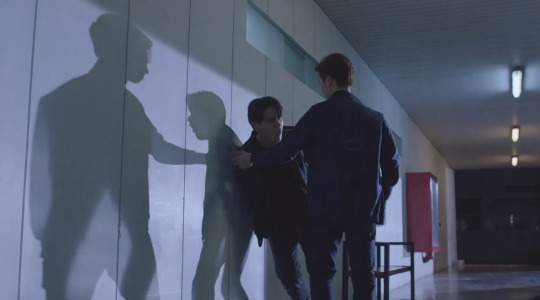
But if there is one thing I want to be known for, it's the Alan Scale.

It's been serving me well for over a year, and I'm sure it will be of use during my SOTUS rewatch since, apparently, thinking I was going to get less than 216 votes was a mistake when I ended up with 535.
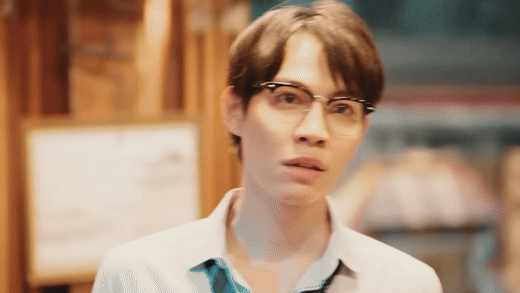
However, I think the votes have more to do with Tumblr folks liking polls, and not the size of my blog, but I like that people really showed up for their favorites, so now I'm watching THREE shows for June! I'm going to start with the winner, Love in the Air, because if I like it, I'll watch Love Sea when it's released. But only if I like it!
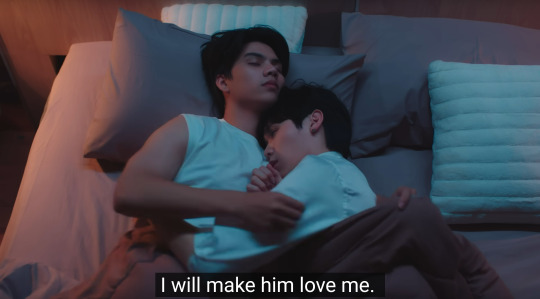
I'm going to watch The Untamed in the middle since it is the longest, and it's color coded, which is not super important to me or anything. I just happen to write about colors every now and then. But it's not like a big deal or something I'm "known" for.

Which is why I think the Alan Scale really is my thing! I hate on a lot of stuff hence the Pride Petty Watch, Petty Prison, and Grudge Garden, so Alan has been useful in gauging my anger. It's also why I'm saving SOTUS for last. I'm fully prepared to be upset, so Alan and the other Petty Watches will hopefully calm me down.

Thanks to everyone who voted in my teeny tiny blog's little petty poll to pick my Pride watches!
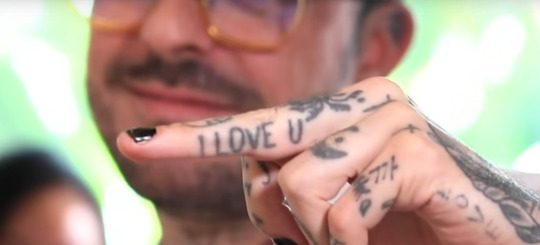
#pride petty watch#I like being known for the Alan Scale#but I don't know why anyone would associate me with colors#it's not like I write about them all the time or something
35 notes
·
View notes
Text
Fanbinding by @jinkieswouldyoulookatthis 📖🫶
Continuing my run as the luckiest little fangirl in the west... 🥺💖

@jinkieswouldyoulookatthis did something truly beautiful for me recently, and I've just received the results: my very own handmade, hand bound copy of my West series.
You can see her incredibly cool (possibly haunted) process here:
Below, you can see my very uncool emotional breakdown of/about it (and some more photos). 🥲

Now look at all of the beautiful details!
These end papers are so eye-grabbing and perfectly selected, since the series takes place through a revolving door of motels, just as in early-seasons canon.

The title verso has all of the information from AO3, the original LJ publishing dates, @idlingintheimpalapodcast's podfic version details, and the fanbinding specs. Then there's the contents page! JUST LIKE A REAL BOOK, YOU GUYS!

Also, did you happen to spot @tsukiyo-7's credit line on the verso page?! BECAUSE I DID! And I had no idea what that was about until I opened to the page with their custom artwork!

How freaking cool is that?! 😭 Thank you, you fantastically talented person! 💖 Everyone go check out their other beautiful art (plenty of stunning Wincest. 🫶) on their Tumblr!
In case you're wondering, the Kushtaka, which Jinkies also created a whole, super cool entry from John's hunting journal for, is the creature that necessitates Sam and Dean ending up in the shower together in part two of the series. 🤭
Then, not only that, but this curious little sticker tumbled out when I opened those pages:


Because Jinkies doesn't do anything by halves, it turns out that she even found this traditional formline artwork of the Kushtaka by Nick Alan Foote, an indigenous artist of Native American Tlingit heritage, where the legend comes from. That is such a special connection to have that I would never have expected. I'm way beyond touched. 🥹 Please check out the artist's other wonderful work here on Insta.
The final dagger in the coffin of my tendency to blubber at the drop of a hat, let alone in the face of heartfelt gestures, was this page:

@sam-is-my-safe-word and @talltalesandbedtimestories have been personal champions and cheerleaders of mine since the very beginning of my return to writing in this fandom, and they haven't stopped since. The fact that they still have effusively kind things to say about me and my work just makes me want to die (in a happy way).
The comments on my fics are, like, 90% of what keeps me writing. Sharing and engaging and knowing that my stories are making people happy is what it's all about for me, so having those comments from @fictionallemons, Faraway22 (not sure if they're on here under a different username?), Jinkies, and @chiquititasnewsong preserved as a reminder of that... Honestly, you should be glad you can't hear the noises I'm making right now.
The thing is, I knew Jinkies was doing this. She asked permission before she started, she offered to make me a copy as well, and I've been elated and flattered from the moment she did. But now, having it in my hands, I'm moved even further than I thought I would be (and believe me, I know myself–I knew I'd be a mess).
I live a very small life, y'all. The joys I experience tend to be on the same scale. So while this might not be grand or extravagant to many people, this gift, of something I put into the world through a medium I've only really known digitally, intangibly, now being something I can hold in my hands as proof that I've touched the lives of people so far and wide, is a kind of profound that these words don't do justice.
It makes my life feel pretty darn big after all.
Thank you, @jinkieswouldyoulookatthis. Thank you to those who contributed. Thank you to everyone who's read and commented and been a part of West in some way over the last 14 years. The story's still being told in this way. I'm so grateful to remain a part of it.

#fanbinding#fan made#handmade#bookbinding#fan crafts#collaboration#fandom appreciation#supernatural fandom#spn family#fanfic#supernatural fanfiction#spn fanfic#ao3 fanfic#wincest#samdean#sam and dean#fanart#spn fanart#writers on tumblr#my fics
48 notes
·
View notes
Text
Yuri of Absence and The Chair of Yuri: Combining Lesbian Manga and Science Fiction - The Secret Garden
This article was originally written in 2021 as part of The Secret Garden, YuriMother's exclusive series of articles, available only for Patrons. If you want to access other articles and help support Yuri and LGBTQ+ content, subscribe to the YuriMother Patreon.
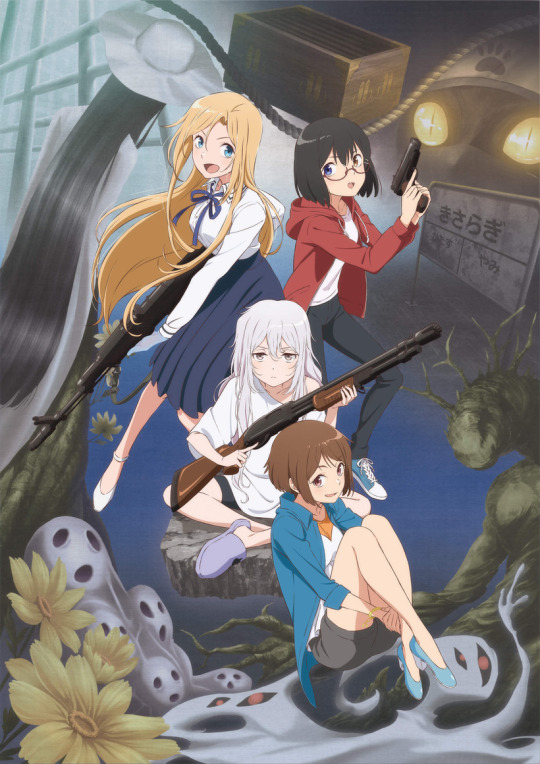
In the “olden days” of Yuri, which is really to say anything in the ‘00s or earlier, there was not much variety in the mainstream Yuri market. If you wanted to read a manga about the romance between two women or watch an anime with clear lesbian elements, choices were between a sweet school story or a classic tragic school Yuri story. As I have mentioned many times recently, one of the most significant advancements in the recent Yuri genre is the advent of sub-genres. Once considered an element or subgenre itself, Yuri hosts various works from isekai to feminist literature. However, one of the most curious and certainly most well-known subgenres is science fiction.
Yuri science fiction is in the spotlight right now, with everything from visual novels like Synergia to webcomics like Ratana Satis’s Soul Drifters. However, one of the most prolific and rightly celebrated titles is Iori Miyazawa’s Otherside Picnic. The series began publishing under Hayakawa’s Bunko JA imprint in 2017, and over the past few years, it exploded onto the scene. It has an upcoming sixth book, a manga adaptation serialized in Monthly Shounen Gangan, healthy overseas publishing, and of course, an anime adaptation helmed by Kase-san and Stiens;Gate director Takuya Sato. It has garnered praise from critics CBR, Anime News Network, and Erica Friedman of Okazu. I wrote glowing reviews for the first few books, complimenting its worldbuilding, pacing, and characters. However, Otherside Picnic did not spring out of anywhere. Indeed, it is the product of gradual shifts in Yuri and sci-fi storytelling and Miyazawa’s genius theories and knowledge of the genres.

The mixture of Yuri and science fiction is not anything new; it predates most other forms of Yuri save Class S school romances. You may not picture many of these when you think of modern Yuri sci-fi, but as early as 1975, we had Yuri stories like Boku no Shotaiken that included small sci-fi elements, in this case, transferring the mind to another body. Over the next two decades or so, a time during which so few Yuri titles surfaced, it is occasionally referred to as Yuri’s “era of Darkness,” multiple titles sci-fi titles including Dirty Pair, Project A-Ko, Bubblegum Crisis, and Iczer featured science fiction settings and Yuri elements. At this time, Yuri was not much of a genre as we think of it today, but more of a factor inserted into a larger narrative. Think of Yayoi and Shion from Psycho-Pass for a more contemporary example. In fact, except for Iczer, none of these titles feature any outright lesbian characters, just female casts with “Yuri-ish” moments of women standing close together and being companions.
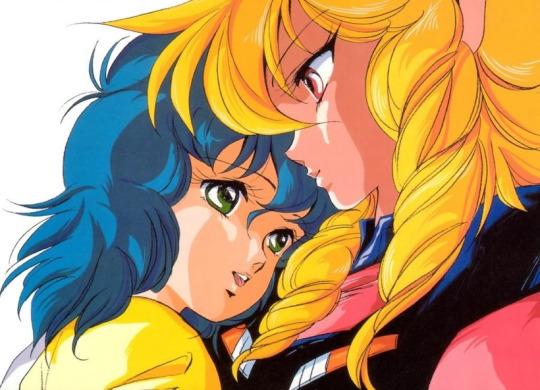
These titles feature two key elements that many current series have shifted further away from, soft sci-fi and Weak Yuri. Soft, as opposed to hard science fiction, is the more established of these two scales. Science fiction can be separated between outlandish and impossible ideas, sometimes known as science fantasy, and those based in reality, research, and the hard sciences such as physics, astronomy, and mathematics. Sorting works between these two labels is, ironically, not an exact science, and fans and critics alike argue about their precise definitions. However, let us consider soft and hard science as a spectrum, with outlandish premises like Dragonball on the soft end and the reality-based concepts of Space Brothers at the other. One can sort most titles along this continuum. M Alan Kazlev does an excellent job dissecting this scale in further detail. Many of the titles we enjoy today, including Otherside Picnic, inhabit this transitory space, as it is not fantasy. Still, its reliance on anthropology and psychology’s soft sciences may put it a small step below more grounded hard sci-fi. Still, it is far above the aliens and superpowered robots in ‘80s anime, so we shall consider it hard sci-fi for the sake of this argument.
*Note: Many science fiction circles use the abbreviation sci-fi for soft science fiction and SF for hard science fiction. For ease of readability and common vernacular, this article uses “sci-fi” for both instances.*
Sci-fi Yuri did not break out of soft science fiction territory until very recently. In the 1990s, Yuri underwent dramatic changes thanks to Sailor Moon and Revolutionary Girl Utena, which helped reform it as a genre rather than a feature. Maria Watches Over Us revived S Yuri traditions, and new titles were set in schools and focused on modern girls’ lives. In the 2000s, Yuri magazines began serialization and featured stories such as Kisses, Sighs, and Cheery Blossom Pink and Strawberry Shake Sweet (both serialized under different names). Despite being primarily aimed at adult women, the magazine found success with male audiences, prompting new stories appealing to men and boys. These works reintroduced action and science fiction into the genre with pieces like Kannazuki no Miko: Destiny of the Shrine Maiden, Blue Drop, and Kashimashi: Girl Meets Girl (Yuriboke does a better job breaking all these down). However, all these were still vehemently in soft sci-fi territory, with Kashimashi’s only surreal element being an alien because the author was, to simplify grossly, unable to fathom the existence of transgender people (coming full circle from Boku no Shotaiken). Possibly the only contemporary mainstream hard sci-fi title to include Yuri and enjoy a modicum of success was Qualia The Purple. However, this series did not have the genre-defining power that later works would.

However, what changes between these series and those mentioned earlier is the Yuri itself. The relationships become much more explicit and central to the plot. You can deliberate whether or not Bubblegum Crisis is sapphic, but just try sitting someone down and arguing that Kannazuki no Miko is not built around the crux of two women holding romantic interest in each other. Yuri science fiction author Gengen Kusano proposes a dichotomy similar to soft and hard sci-fi to analyze these titles, Weak and Strong Yuri. He explains it in his own brilliantly convoluted and philosophical way, but in short, Weak Yuri relies on using logic and the mind to make the real imaginary, while strong Yuri is about emotionalism and realism, making fiction into reality.
Strong Yuri is Yuri that focuses on realism through feelings and emotions. Kusano describes it as fiction characters having real emotions. They have strong connections and affection for each other that are real and powerful. The audience experiences the feelings between the characters as they are felt and portrayed. Think of how emotional the exclamations and love, sorrow, confusion, and affection are in titles like Bloom Into You and Citrus. In a sense, they can be so strong that they transcend their fictional confines and become real, as they are experienced by considers, a stage called “radically Strong Yuri.” Most explicit Yuri, which is not subtext or suggestive content but in-your-face lesbianism, is Strong Yuri, although not all Strong Yuri is outright depictions of lesbianism; it is a square rectangle situation, not all rectangles are squares, but all squares are rectangles.
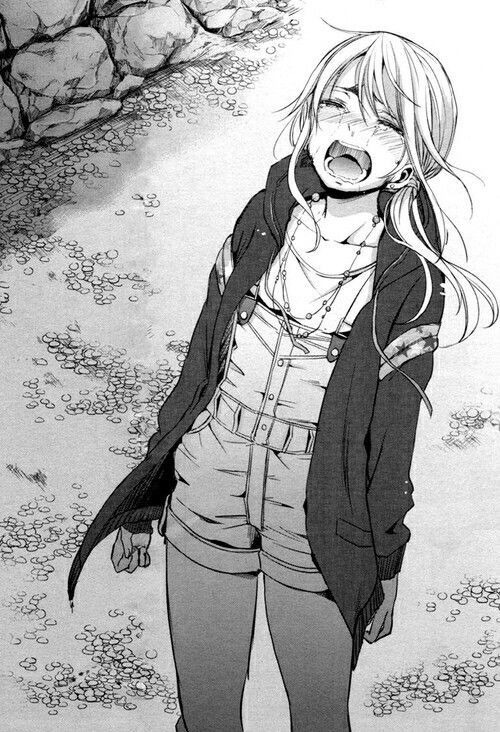
Weak Yuri is cemented in the areas of thought, logic, and epistemology. It deals with the theory of mind, the ability to attribute mental states to others or ourselves. For example, when we see someone smiling or laughing, we may not feel their emotion ourselves, as we do not have direct access to their mind, but we recognize that they are happy. In Weak Yuri, one uses their theory of mind to observe facts and deduce the existence of a Yuri relationship, even if one is not present. So-called “Yuri-ish” titles like Yuru Camp or K-ON! do not outright state or depict romantic or sexual attractions, but is attributed by the viewers onto characters. Said observer witnesses the interactions between girls and, using that factual and observable data, puzzles out a lesbian attraction they prescribe to the subjects, whether real. Shipping culture relies on Weak Yuri’s logic Kusano’s most extreme, “Radical Weak Yuri,” the relationships of real people, like idols, become imaginary through these projections.

Blue Drop and Kashimashi may have been soft Sci-fi, but unlike the soft sci-fi, Weak Yuri series of the twentieth century, they featured Strong Yuri and placed it more as a central aspect of the work with other elements built around, rather than as a side element. The next revolution in sci-fi Yuri came when hard sci-fi titles began production. A few of the principal players here are Kusano himself, Otherside Picnic Creator Iori Miyazawa, and editor Rikimura Mizoguichi, all of whom feature in the viral Yuri Made Me Human interview of Miyazawa. Most of the theories and ideas discussed in this article, including Kusano’s Weak and Strong Yuri arguments, came from these seminars.
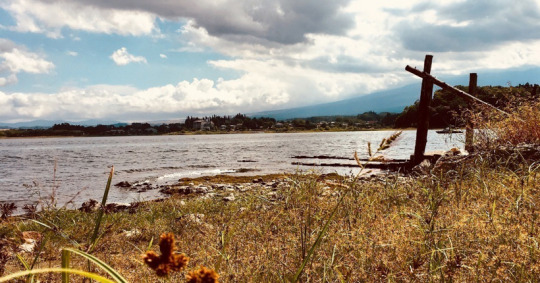
It all started with Kusano’s existential widescreen Yuri baroque proletariat hard sci-fi Love Live AU fanfic of the popular ship NicoMaki, consisting of Nico Yazawa and Maki Nishikino. The revised edition of this story, Last and First Idol, was published in 2016 and became the first debut title to win the prestigious Seiun Award in 42 years. Satoshi Maejima’s post-script essay at the end of the Last and First Idol collection gives far more detail into these works’ history. However, Idol was the first prominent story to feature Yuri in a hard sci-fi narrative. It was not perfect. In fact, in its push to feature gruesome content and insane hard sci-fi that Yuri is pushed to the wayside during most of the story.

*Author’s note: The first time I read Last and First Idol, I was completely unaware of its contents, which was a shocking experience; the story comes with a severe content warning).
Last and First Idol did not create a woven hard sci-fi, Strong Yuri narrative. However, it was a definite proof of the concept, a testament that the sprawling details and imagery of hard Sci-Fi could work with Yuri relationships. Kusano’s next short story, Evolution Girls, which would appear alongside Last and First Idol in the collection of the same name, saw the author focus more on emotionalism and create a Strong Yuri work. Nevertheless, Last and First Idol was a massive success. Future hard proof that Yuri hard sci-fi was coming in force came in December 2018, when Hayakawa Shobo ran a special edition of its long-running S-F Magazine featuring Yuri stories. The issue, planned by Rikimura Mizoguchi, proved so popular for the second time in its then 59-year history, the magazine had to reprint before release.

While Kusano was developing theories on Yuri and Hayakawa Shobo worked to push the public eye onto Yuri sci-fi, author Iori Miyazawa was refining his own Yuri premises, ones that, though he did not know it at the time, would not only see Strong Yuri and Hard sci-fi standing side by side in the same story but would synthesis the two into a unique product that could attract new fans and expand the borders of science fiction and Yuri. The work in question, of course, is Otherside Picnic. This light novel series about girls journeying to another world to hunt creatures from occult internet lore is to date Yuri science fiction’s best execution.

As Miyazawa admits, he strives to create Strong Yuri by focusing on emotionalism and realistic characters. However, such character-driven narratives are often at odds with hard science fiction, which requires dense walls of text to explain the complicated science behind its concepts and world. Miyazawa avoids this trap by utilizing Yuri tropes, specifically scenic Yuri and “Yuri of absence,” and integrating Yuri relationship into these explanatory literary lectures. Examining the latter first, rather than using narrative or exposition dialogue to unravel the intelligence behind the world or elements of science fiction, Miyazawa uses the relationship between Sorawo and Toriko.
In Otherside Picnic, explanations of the mysterious Otherside come primarily from two sources, dialogue and Sorawo’s inner monologue. When Sorawo and Torikko discuss a nuance of the paranormal creatures they investigate, it no longer becomes a large infodump but a Yuri scene about their relationship through their interactions and responses. According to both the strong Yuri theory and Yuri’s traditional definition, these emotions and discussions are the crux of the genre – stories about females’ relationships. Similar emotionalism fills Sorawo’s inner monologues, specifically in the frequent romantic admirations of Toriko. Thus, an explanation existing in that same space becomes Yuri, as it mirrors the same emotions and attraction. Merely by placing the usual exposition into interactions and relationships, Miyazawa was able to open hard science fiction to new readers, who may have been apprehensive before because of these text walls.
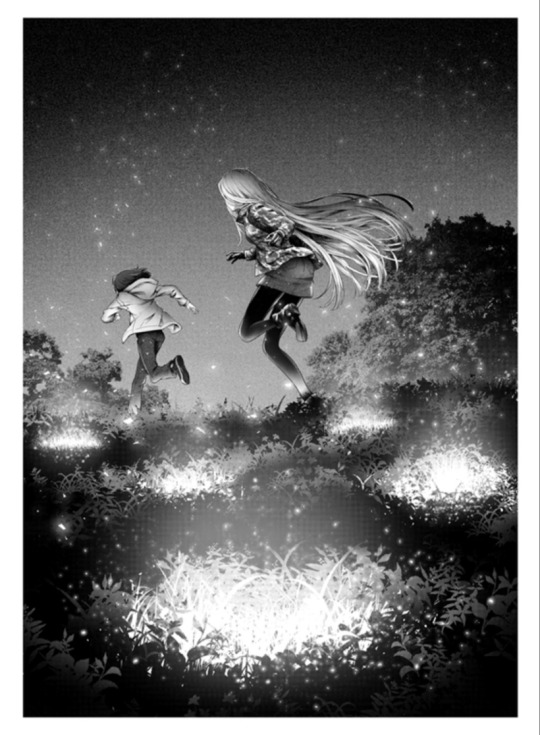
Miyazawa’s other secret weapon is, as he describes it, “Yuri of absence.” Relying on the principles of Strong Yuri, that Yuri is fiction made real through emotions, Yuri of absence extends these parameters outside of characters. As Strong Yuri relies on feeling, not observable data like characters, anything that invokes two women’s feelings together is Yuri. It could be a song, or an empty bench, as one can imagine two women on it and feel emotions tied to that. Of course, taken to its extreme, nearly anything can then be Yuri, as I have joked before, gesturing to an empty chair proclaiming, “Behold, a Yuri!” However, Miyazawa uses this Yuri of absence sparingly, rendering it closer to scenic Yuri’s intimacy.
Scenic Yuri, a particular type of Yuri of absence, focuses exclusively on setting and imagery, a feature that works particularly well in science fiction as according to Masahiro Noda’s “sci-fi is all about images.” Traditional Yuri uses character interaction and supplements it with images and sights that help communicate characters�� emotions and intimacy, like fleeting shots or descriptions of the sky. Take the shot from Kase-san and Morning Girls where Yamada stands by the bus stop. The distance between the girls, the tree in the foreground on Yamada’s side, and the pole on the right all invoke emotion and help tell the girls’ story, distanced by their differences and upcoming life paths. Now remove the girls, the scene remains, as does its meaning and emotions, whether the characters are present or not.
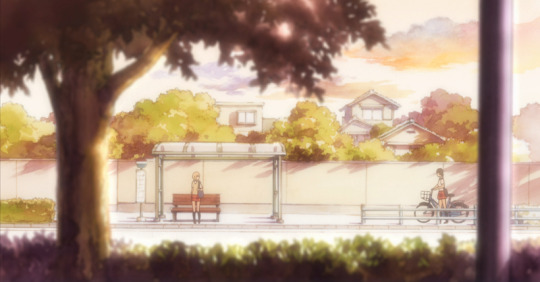
Scenic Yuri is employed vigorously in more male-targeted S Yuri (a minority of the Class S genre). Here, the imagery provides intimacy so that the voyeuristic viewer could look into the characters’ private and forbidden lives, specifically the girls in all-girls schools. Take the shot from Strawberry “Mo Man May Enter Here” Panic. The sweeping view of the Strawberry Dorms atop Astraea Hill, a place where men are forbidden, gives the consumer an exclusive inside look at the private home of its subjects. Otherside Picnic uses these same scenic Yuri principles in its descriptions. In this case, the intimacy does not come from a place where men are prohibited or a shot describing women’s relationships. Instead, the reports of abandoned ruins and deserted open fields where only Toriko and Sorawo exist provide extreme intimacy. It is an emotional view of two of the few women in this world with nothing but each other; thus, Yuri.
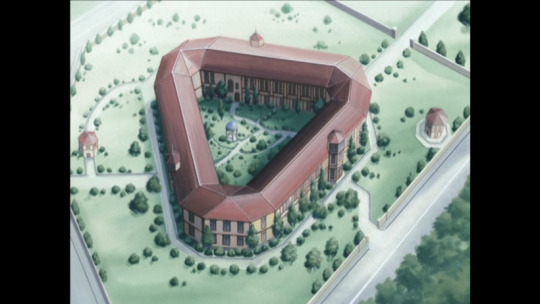
Yuri science fiction is easily the most exciting place in the genre right now. Its creators are experimenting with new theories and storytelling methods to expand the boundaries of what science fiction or Yuri alone could never do. The subgenre has undoubtedly come a long way from its Weak Yuri roots and continues to grow. Industry leaders like Miyazawa and Mizoguichi will continue to push into this excited and uncharted territory, using tactics new and old to bring together Yuri’s emotional and romantic core with science fiction’s epic and provoking imagery. I have few doubts that we have seen all these pioneers have to offer and that Last and First Idol and Otherside Picnic are just the beginning.
Sources
Friedman, Erica, and Kishiji Bando. “Shoujo Yuri Manga Guide.” Yuricon, 29 Mar. 2011, https://www.yuricon.com/oldessays/shoujo-yuri-manga-guide/.
Hanson, Katherine. Yuri No Boke 百合のボケ 〜百合が好きだ〜: Sci-Fi Yuri Anime and Manga. 17 Feb. 2012, http://yurinoboke.blogspot.com/2012/02/sci-fi-yuri-anime-and-manga.html.
Kit, et al. Tomo Choco Podcast Episode 58: A Trip to the Otherside. https://directory.libsyn.com/episode/index/show/tomochoco5287491142565609/id/14974343. Accessed 18 Feb. 2021.
Komatsu, Mikikazu. “S-F Magazine’s Yuri-Themed Issue Gets Reprints Before Release.” Crunchyroll, https://www.crunchyroll.com/anime-news/2018/12/18/s-f-magazines-yuri-themed-issue-gets-reprints-before-release. Accessed 18 Feb. 2021.
Kusano, Gengen. “[R-18] #SF #矢澤にこ 【SF合同サンプル】最後にして最初の矢澤 - 節足原々(セッソクハラハラ)の小説.” Pixiv, https://www.pixiv.net/novel/show.php?id=4992326. Accessed 18 Feb. 2021.
M Alan Kazlev. “The Scale of Hardness in Science Fiction.” Futurism, https://vocal.media/futurism/the-scale-of-hardness-in-science-fiction. Accessed 18 Feb. 2021.
Masayuki Sakoi. Strawberry Panic S01:E21 - Like a Flower. Madhouse, 2006. tubitv.com, https://tubitv.com/tv-shows/558933/s01-e21-like-a-flower.
Maser, Verena. Beautiful and Innocent: Female Same-Sex Intimacy in the Japanese Yuri Genre. ubt.opus.hbz-nrw.de, https://ubt.opus.hbz-nrw.de/frontdoor/index/index/docId/695. Accessed 18 Feb. 2021.
Miyazawa, Iori, et al. Yuri Made Me Human, Part 2. Translated by Kati_lilian, 24 Aug. 2018, https://teletype.in/@kati_lilian/S1yjBCJgH.
Miyazawa, Iori, and Rikimaru Mizoguchi. Yuri Made Me Human — Interview with Iori Miyazawa. Translated by kati_lilian, May 2018, https://teletype.in/@kati_lilian/SJA8KwjjN.
Moore, Caitlin, et al. “The Winter 2021 Preview Guide - Otherside Picnic.” Anime News Network, https://www.animenewsnetwork.com/preview-guide/2021/winter/otherside-picnic/.167892. Accessed 18 Feb. 2021.
Nicki “YuriMother” Bauman. The History and Future of Transgender Representation in Yuri - The Secret Garden, January 2021 | YuriMother on Patreon. https://www.patreon.com/posts/45495024. Accessed 18 Feb. 2021.
---. “Yuri Is for Everyone: An Analysis of Yuri Demographics and Readership.” Anime Feminist, 12 Feb. 2020, https://www.animefeminist.com/yuri-is-for-everyone-an-analysis-of-yuri-demographics-and-readership/.
Pinansky, Sam. Interview with J-Novel Club’s Sam Pinansky. Interview by Erica Friedman, 1 Oct. 2019, https://okazu.yuricon.com/2019/10/01/interview-with-j-novel-clubs-sam-pinansky/.
Sarantos, Constance. “How Otherside Picnic Breaks the Yuri Genre Mold.” CBR, 10 Jan. 2021, https://www.cbr.com/otherside-picnic-breaks-yuri-genre-mold/.
“「SF冬の時代」は雪解けを迎えた 早川書房・溝口力丸 Vol.1.” KAI-YOU Premium, https://premium.kai-you.net/article/201. Accessed 18 Feb. 2021.
Snapshot. https://www.cbr.com/otherside-picnic-breaks-yuri-genre-mold/. Accessed 18 Feb. 2021.
Takuya Satou. Watch Kase-San and Morning Glories. Sentai Filmworks, 2018. vrv.co, https://vrv.co/series/GYQWD1X1Y/Kase-san-and-Morning-Glories.
Walter, Damien. “Science Fiction vs SciFi vs SF: What Is the True Definition?” Damien Walter, 7 Aug. 2018, https://damiengwalter.com/2018/08/07/science-fiction-vs-scifi-vs-sf-what-is-the-true-definition/.
YuriMother. “LGBTQ Light Novel Review - Otherside Picnic Vol. 1.” The Holy Mother of Yuri, 12 Dec. 2019, https://yurimother.com/post/189635367305.
This article was originally written in 2021 as part of The Secret Garden, YuriMother's exclusive series of articles, available only for Patrons. If you want to access other articles and help support Yuri and LGBTQ+ content, subscribe to the YuriMother Patreon.
#Yuri#otherside picnic#the secret garden#miyazawa yuri#yuri of absence#scenic yuri#lgbt#lgbtq#lgbtq+#queer#gay#lesbian
403 notes
·
View notes
Note
For the ask game: 6 for John please

How would I spend the day with John?
Well, clearly it's space themed somewhat … but as I'd expect he'd visit these two places for sure I wouldn't be taking him to the traditional NASA/Space Center Houston (Texas) or Cape Kennedy (Florida).
I'd argue he'd be interested in touring the remains of the Trinity Project site, but as that's an all day event and you really wouldn't see much - I think he'd skip it unless he really needed sleep.
(The Trinity Project site is open only twice a year as it's on the White Sands Military base. It's the site where they tested the first nuclear bomb, and really from what I've seen and read, there isn't much).
So, we'd go to the New Mexico Museum of Space History in Alamogordo, New Mexico and tour the building.
He'd probably be like me - but worse, correcting folks on names of astronauts next to the scale models of the original projects.
(No seriously - for as much as they talk about Alan Shepard himself and John Glenn's Friendship 7 mission, they sure do use a lot of photos of Gordon Cooper for references to items. Cooper wasn't even from New Mexico. Several of the doctors and physicians who whittled down the 32 applicants to 7 were that I know of, and the original 7 had their physicals in a clinic in Albuquerque).
He'd likely too get a kick out of seeing all the rockets and test tracks and such.
Don't know if the staff would be appreciative or annoyed he’d talk people through the landing of shuttles in the simulators (they have fun seeing folks try but fail spectacularly…) then debate the rocket building. (He Would have some issues about the experiences of the experience if you were in a rocket or shuttle for several projects).
We'd likely skip the planetarium and Omni, but instead go to White Sands National Park (not part of the base) and have fun walking and sliding down the sand dunes. (Yes, we'd get the sleds to do this, and hilarity would ensue. There'd be perks here with him being well known- he would have a lifetime pass to the parks).
Afterward, we'd likely go to either Pistachioland for pistachios (maybe sample some wine) or just head up 18 miles to Cloudcroft, stopping at the Red Barn Restaurant to eat a good burger and fries (I preferred theirs over the restaurant I ate at in Cloudcroft, though it too was good), maybe see the railroad trestle bridge too.
If the weather was pleasant we'd eat outside and enjoy the mountain view (it was too windy and cold for me to do this last go).
The rest of the day would be enjoying the mountains in Cloudcroft, some shopping (if the weather was nice - the snow does stay there even in 60*F temps), drive by the museum (I'll be honest it'd be closed by the time we got there), do some walking around the cabin site and then turn in for the night. It would either be two separate cabins or one of the larger ones with two separate rooms.
Thanks for the ask.
2 notes
·
View notes
Text
I find it interesting how countries can generally have famous poets, writers, artists and reknowned celebrities on their currency. Personally, I find it kinda strange to have such faces on money. Money is produced by the establishment with a whole host of shackling and bureaucratic conditions, yet I've seen pictures on foreign currency that feature poets, artists and thinkers, people at times who were opposed to the establishment and not really associated with it in any official capacity. Some who would even hate it and neo-capitalism. Some who died penniless after being screwed by capitalism. It makes more sense to me for the Bank of England to use the face of our head of state than Alan Turing. Ironically, East Germany once released a bank note with Karl Marx's face on it I hear, he must have been rolling in his grave.
The problem I find is people like Greta Garbo and Sophie Taeuber-Arp seem much more important than the paper bank notes their printed on in my opinion. Money is a tool and often can be the mechanism of evil, it endlessly props up a system of inequality all while being pieces of paper we're essentially coerced into accepting as tender value. We practically have to sell ourselves for it and basic amenities. If I ever achieve something really amazing, I'd hate to have my face on a bank note. There's something very cold and stale about it, like banks and government are trying to co-opt human brilliance and imagery for this uplifting veneer of human spirit when they're the ones that often crush it. It makes more sense to me that the King is on our currency, because he is fundamentally insignificant yet we're continuously told he's important because he's in charge of of a tier system, just like money, I think it fits beautifully in a nihilistic way.
In my country, the City of London, also known as the Square Mile, is a financial enclave that exists within the actual London where many rules of the rest of the country don't apply. It has its own private police force under the City of London Corporation, and mass scale fraud, corruption and tax evasion linked to British tax havens like Bermuda, Jersey and the Cayman Islands to name a few. The Royal Family have also been linked to off-shore tax evasion as well, so it really is match made in heaven. And so every time the Bank of England try to slap Charles Darwin's Beagle on the 10 pound note to inspire us all, it honestly feels like a sick joke that never keeps giving.
#british politics#bank of england#british royal family#tax evasion#capitalism#banks#corruption#police corruption#money#uk
1 note
·
View note
Text
Everything, everywhere all at once
New Post has been published on https://thedigitalinsider.com/everything-everywhere-all-at-once/
Everything, everywhere all at once


The way Morgane König sees it, questioning how we came to be in the universe is one of the most fundamental parts of being human.
When she was 12 years old, König decided the place to find answers was in physics. A family friend was a physicist, and she attributed her interest in the field to him. But it wasn’t until a trip back to her mother’s home country of Côte d’Ivoire that König learned her penchant for the subject had started much younger. No one in Côte d’Ivoire was surprised she was pursuing physics — they told her she’d been peering upward at the stars since she was a small child, wondering how they all had come together.
That wonder never left her. “Everyone looks at the stars. Everyone looks at the moon. Everybody wonders about the universe,” says König. “I’m trying to understand it with math.”
König’s observations have led her to MIT, where in 2021 she continued studying theoretical cosmology as a postdoc with physicist and cosmologist Alan Guth and physicist and historian of science David Kaiser. Now, she is a member of MIT’s 2023-24 Martin Luther King (MLK) Visiting Professors and Scholars Program cohort, alongside 11 others. This year, members of the MLK Scholars are researching and teaching diverse subjects including documentary filmmaking, behavioral economics, and writing children’s books.
Once she was set on physics, König finished her undergraduate studies in 2012, double-majoring in mathematics and physics at Pierre and Marie Curie University in Paris.
Still compelled by questions about the universe, König narrowed in on cosmology, and graduated with her master’s degree from Pierre and Marie Curie in 2014. The way König describes it, cosmology is like archaeology, just up in space. While astronomers study galaxy formations and mutations — all of the stuff in the universe — cosmologists study everything about the universe, all at once.
“It’s a different scale, a different system,” says König. “Of course, you need to understand stars, galaxies, and how they work, but cosmologists study the universe and its origin and contents as a whole.”
From practice to theory
Throughout her studies, König said, she was often the only woman in the room. She wanted to pursue the theories behind cosmology but wasn’t encouraged to try. “You have to understand that being a woman in this field is super, incredibly difficult,” says König. “I told everyone I wanted to do theory, and they didn’t believe in me. So many people told me not to do it.”
When König had the opportunity to pursue a PhD in observational cosmology in Marseille and Paris, she almost accepted. But she was more drawn to theory. When she was offered a spot with a little more freedom to study cosmology at the University of California at Davis, she took it. Alongside Professor Nemanja Kaloper, König dove into inflation theory, looking all the way back to the universe’s beginning.
It is well-known that the universe is always expanding. Think about inflation as the precursor to that expansion — a quick and dramatic beginning, where the universe grew exponentially fast.
“Inflation is the moment in history that happened right after the beginning of the universe,” says König. “We’re not talking about 1 second, not even a millisecond. We are talking 10 to the negative 32nd seconds.” In other words, it took 0.000,000,000,000,000,000,000,000,000,000,01 seconds for the universe to go from something minuscule to, well, everything. And today, the universe is only getting bigger.
Only a sliver of the universe’s composition is understandable using current technology — less than 5 percent of the universe is composed of matter we can see. Everything else is dark matter and dark energy.
For decades, cosmologists have been trying to excavate the universe’s mysterious past using photons, the tiny, particle form of light. Since light travels at a fixed speed, light emitted further back in the universe’s history, from objects that are now farther away from us due to the expansion of the universe, takes longer to reach Earth. “If you look at the sun — don’t do it! — but if you did, you’d actually be seeing it eight minutes in the past,” says König. As they carve their way through the universe, photons give cosmologists historical information, acting as messengers across time. But photons can only account for the luminous 4.9 percent of the universe. Everything else is dark.
Since dark matter doesn’t emit or reflect photons like luminous matter, researchers can’t see it. König likens dark matter to an invisible person wearing a tuxedo. She knows something is there because the tuxedo is dancing, swinging its arms and legs around. But she can’t see or study the person inside the suit using the technology at hand. Dark matter has stirred up countless theories, and König is interested in the methods behind those theories. She is asking: How do you study something dark when light particles are necessary for gathering historical information?
According to König and her MIT collaborators — Guth, the forerunner of inflation theory, and Kaiser, the Germeshausen Professor of the History of Science — the answer might lie in gravitational waves. König is using her time at MIT to see if she can sidestep light particles entirely by using the ripples in spacetime called gravitational waves. These waves are caused by the collision of massive, dense stellar objects such as neutron stars. Gravitational waves also transmit information across the universe, in essence giving us a new sense, like hearing is to seeing. With data from instruments such as the Laser Interferometer Gravitational Wave Observatory (LIGO) and NANOGrav, “not only can we look at it, now we can hear the cosmos, too,” she says.
Black in physics
Last year, König worked on two all-Black research teams with physicists Marcell Howard and Tatsuya Daniel. “We did great work together,” König says, but she points out how their small group was one of the largest all-Black theoretical physics research teams — ever. She emphasizes how they cultivated creativity and mentorship while doing highly technical science, producing two published papers (Elastic Scattering of Cosmological Gravitational Wave Backgrounds and An SZ-Like Effect on Cosmological Gravitational Wave Backgrounds).
Out of the 69,238 people who have earned doctorates in physics and astronomy since 1981, only 122 of them were Black women, according to the National Center for Science and Engineering Statistics. When König finished her PhD in 2021, she became the first Black student at UC Davis to receive a PhD in physics and the ninth Black woman to ever complete a doctorate in theoretical physics in the United States.
This past October, in a presentation at MIT, König ended with an animated slide depicting a young Black girl sitting in a dark meadow, surrounded by warm lights and rustling grass. The girl was looking up at the stars, her eyes full of wonder. “I had to make this with AI,” says König. “I couldn’t find an image online of a young Black girl looking up at the stars. So, I made one.”
In 2017, König went to Côte d’Ivoire, spending time teaching school children about physics and cosmology. “The room was full,” she says. Adults and students alike came to listen to her. Everyone wanted to learn, and everyone echoed the same questions about the universe as König did when she was younger. But, she says, “the difference between them and me is that I was given a chance to study this. I had access to people explaining how incredible and exciting physics is.”
König sees a stark disconnect between physics in Africa and physics everywhere else. She wants universities around the world to make connections with African universities, building efforts to encourage students of all backgrounds to pursue the field of physics.
König explains that ushering in more Black and African physicists means starting at the beginning and encouraging more undergraduates and young students to enter the field. “There is an enormous amount of talent and brilliance there,” König says. She sees an opportunity to connect with students across Africa, building the bridges needed to help everyone pursue the questions that keep them looking up at the stars.
While König loves her research, she knows theoretical cosmology has far to come to as a discipline. “There is so much room to grow in the field. It’s not all figured out.”
#000#2023#Africa#ai#archaeology#Astronomy#Astrophysics#Behavioral economics#Books#Building#Center for Theoretical Physics#Children#Composition#cosmology#cosmos#course#creativity#Dark#dark energy#dark matter#data#Difference Between#Diversity and Inclusion#double#earth#Economics#energy#engineering#eyes#form
0 notes
Text
Does ChatGPT understand language?
Check out all the on-demand sessions from the Intelligent Security Summit here.
Systems that consume vast quantities of human creations to emulate our behaviors are pushing forward the cutting edge in AI. Dall-E and Stable Diffusion learned to generate images from prompts, allowing us to view renditions of superheroes as Renoir might have painted them.
Large language models (LLMs) perform a similar trick with language, pumping out realistic press releases or code reviews as performed by a pirate. The most recent iteration, ChatGPT, has drawn immense attention as people have explored the extent of its capabilities in endlessly amusing variations.
So, what does all this mean for progress toward true AI? Is this the real deal? A step back from that? Or a simple parrot, our human artifacts merely reflected back at us through the funhouse mirror of code?
Gangsters and sonnets alike
What this latest class of algorithms clearly demonstrates is a combinatorial understanding of concepts. When asked to explain computer science algorithms as a wise-guy from a 1940’s gangster movie, ChatGPT accomplishes both tasks. We can vary the character it speaks as, or the topic we want it to speak to.
Event
Intelligent Security Summit On-Demand
Learn the critical role of AI & ML in cybersecurity and industry specific case studies. Watch on-demand sessions today.
Watch Here
In another example, Alan Turing in his “Imitation Game” paper introduced the topic of the Turing Test, where computers can be said to think when a human investigator can’t distinguish them from a human. Turing gave as an example prompt the request to “write a sonnet on the subject of Forth Bridge.” When I posed the task to GPT, its response included this stanza:
“The bridge is grand, a symbol of its time,
A beacon to the Scottish people proud,
It stands today, a testament of pride,
Reminds us of the days when dreams were loud.”
Not every rhyme and meter worked — recall that GPT has never heard a sound but inferred these concepts from predicting words in sentences — but it clearly endeavored to construct iambic pentameter and follow the appropriate rhyme scheme. It stayed on topic. It was written poetically.
Compelling cognitive abilities
In my limited search, I couldn’t find any prior usage of “dreams were loud” as a metaphor (only people complaining about being woken by their dreams). It’s an obvious metaphor, relatively shallow as they go, but it’s genuine.
We can point to the many poems that fed GPT-3 and question what is truly novel in its output. But if the building blocks are known, the intersections are unique and new. And putting known building blocks together into novel patterns is a compelling cognitive ability.
Although the training data volumes involved are massive, the regularities were all discovered by these networks — the rules of sonnets and limericks, the linguistic quirks of pirate-ese. Programmers did not carefully generate training sets for each task. The models found the rules independently.
Where does GPT-3 lack? The above stanza is adequate as poetry but doesn’t surprise or challenge us. When it imitates a pirate, it doesn’t add new nuance to the role. GPT-3 was trained on approximating the most probable words in sentences. We can push it towards more random outputs — not the most likely but the 5th most likely — but it strongly follows the trail of what’s been said repeatedly.
It can explain known tasks well but struggles to give novel suggestions and solutions. It lacks goals, its own impetus. It lacks a meaningful distinction between what’s true versus a likely thing to be said. It has no long-term memory: Generating an article is possible, but a book does not fit in its context.
More nuanced language understanding
At each new scaling factor of language models and each research paper hot off the press, we observe a more nuanced understanding of language. Its outputs get more varied, and its abilities more extensive. It uses language in increasingly obscure and technical domains. But the limitations and the tendency towards banality persist.
I have become increasingly convinced of how powerful self-attention is as a neural network concept for finding patterns in a complex world. On the flip side, the gaps in the computer’s understanding become clearer in comparison to the rapid improvement in so many areas.
Looking at GPT’s understanding of pronouns in semantically ambiguous situations, its sense of humor, or its complex sentence structures, I’d surmise that even the current version is sufficient for general language understanding. But there’s some other algorithm as yet un-invented, or at least a particular combination of existing algorithms and training tasks that are needed to approach actual intelligence.
Understanding language: Identifying meaningful patterns
To return to the initial prompt: Whether it’s the unscientific wonder at seeing a Shakespearean sonnet arise from the dust of simple word prediction tasks, or the steady erosion of the human gap in myriad tasks to plumb the depth of artificial understanding of language, the language models in use today are not just a parlor trick. These processes do not just parrot human language but find the meaningful patterns within it — be it syntactic, semantic, or pragmatic.
Yet, there’s something more going on in our head, even if it’s just the same techniques self-applied at another level of abstraction. Without some clever new technique, we’ll continue banging our heads on the limitations of our otherwise impressive tools. And who can say when the bolt of inspiration will strike there?
So no, true AIs have not yet arrived. But we’re significantly closer than we were before, and I predict when it does, some variation of self-attention and contrastive learning will be a significant portion of that solution.
Paul Barba is Chief Scientist at Lexalytics, an InMoment Company.
DataDecisionMakers
Welcome to the VentureBeat community!
DataDecisionMakers is where experts, including the technical people doing data work, can share data-related insights and innovation.
If you want to read about cutting-edge ideas and up-to-date information, best practices, and the future of data and data tech, join us at DataDecisionMakers.
You might even consider contributing an article of your own!
Read More From DataDecisionMakers
0 notes
Text
Backlash and Boycotts: Smash Community Responds in Waves to Nintendo Canceling the Smash World Tour

The community is mobilising in response to the huge gaming company's surprise stop and desist, which forced the team to postpone the Smash World Tour. The large gaming corporation decided to get involved rather than letting things work out with an independent Super Smash Bros. tournament organiser.
This is, unfortunately, familiar territory for a lot of the Smash community as Nintendo has pulled similar stunts in the past.
However, never to this scale or this manner; even the SWT team thought things with the Big N were going well based on multiple conversations with the company dating back to late 2021 that involved a completed submission for a license to operate in an official capacity.
Now, with the SWT Championships 2022 canceled just 10 days before it was set to be hosted in San Antonio, and VGBC penning an open letter to Nintendo in hopes of potentially getting the company to change its decision, the community has been left with no answers and even more questions.
To start, the players who did qualify to attend or were paying their way out in order to compete for a spot in the Last Chance Qualifier are now left holding the bag in terms of needing to cancel travel plans and accommodations.
Many players prioritized the SWT Championships over other Smash events happening around the same time and are now being punished for doing so too.
https://twitter.com/ferpsfgc/status/1597727825112731648
This decision also strips away any chance for lesser-known Smash players from around the world who were going to make that trip and compete to showcase their skills on what would have been the biggest stage with a $250,000 prize pool.
https://twitter.com/LoopBarnard/status/1597735667617828865
In the case of Melee players and members of the community who come from fanmade spaces like Project M, this is just another instance of being burned by Nintendo and they are ready to burn the bridge from their end too.
This means popular players, commentators, and figureheads within the community calling for boycotts for Nintendo and Panda-sanctioned events to show that actions like this will not go unpunished by the people who helped make the scene what it is today.
I will never attend a publicly licensed Nintendo or Panda Circuit event ever again. I will continue to support grassroots locals and majors, unaffiliated with Nintendo, that have been the lifeblood of our scene for 20+ years.
There are some calmer heads, including Leffen oddly enough, who have made it clear the rage is validated but needs to be contained for now as the community should rally together behind VGBC’s final plea to Nintendo in hopes of potentially reversing the decision. However unlikely this is to happen, since Nintendo openly admitted to expecting backlash, it is still important to make the community’s voice heard and push back on a licensing system that runs off of poor communication and the whims of the company itself.
I think its very important to prioritize making Nintendo change their minds on shutting down Smash World Tour and further events, rather than anything else right now.The rest can come later.
Going beyond the Nintendo element of this, the announcement from SWT also included details about how Panda Global was working behind the scenes for Panda Cup.
This featured claims Panda’s CEO Alan Bunney was using wording about the SWT or other events being shut down to try and recruit TOs to bring their events to the PC over the SWT—including broadcasting rights in that deal.
The most major offense of this was used against Beyond the Summit, as Bunney reportedly warned that Panda would get Nintendo involved and shut down any Smash operations run by the company since they did not have a license if BTS did not sign onto the PC. That didn’t work, but VGBC’s claims have been backed by BTS co-founder David “LD” Gorman regarding those discussions and the community is now calling attention to potential bad actors within Panda, with the St. Louis Melee community going as far as banning Bunney from future events—even if it somewhat of a joke.
Genuinely sad about how Panda is treating the community. I hope this can remind everyone why we don't want to work with Nintendo.
I'm not sure about boycotting all Panda events(smash TOs will be impacted) but with the finale I hope we send a clear message that this is not ok
As a result, multiple top Smash players are pulling out of Panda Cup.
Notable Melee players have already started dropping like flies with Medz, Axe, Fiction, Joshman, and n0ne immediately voicing their support for grassroots Smash and calling out Nintendo and Panda.
I cannot, in good faith, support the Panda Cup Finale after reading about the actions of the CEO of Panda, as well as Nintendo cancelling the Smash World Tour.
As it stands, I'm choosing to drop from the event.
Ultimate players have also brought attention to the issue, with sparg0 among the players questioning if he will attend at all or opting to stay home. And for those who decide to still attend or are potentially contractually obligated to go, the community has some options on how to protest in person.
I've heard that people have signed contracts and MUST attend Panda finals, so I think the right course of action is to, as a community, agree that this tournament doesn't count, so that all the top players can fuck around for 8 minutes every game.
Ludwig brought more eyes to the issue by almost immediately publishing a full episode of Mogul Mail on the subject and talking about it on stream, with responses to the situation continuously flooding in from the Smash community and beyond. In addition, organizations like beastcoast and FlyQuest, which have active roles in the Smash scene, have released statements or support for the SWT in hopes of getting Nintendo to reconsider.
Even Panda’s players and employees are speaking out, with Plup going live on stream to say he is “not Team Panda” on this decision while others have to defend themselves as they are being bashed by angry fans.
I love this game. I had a horrendously rough year and this game kept me going through some of the worst parts of my life. I love Melee, and no matter how abrasive I am, at the end of the day I only want to do what's right.
Wait for all parties to say their piece, then decide.
Panda has yet to issue a statement on the SWT closure and Nintendo refused to provide details on why the decision was made during conversations with VGBC.
But hey, at least fans can look forward to the upcoming Splatoon 3 tournaments where that community will likely show support for its sister esports scene in a way that will make Nintendo ban teams or maybe cancel the events again.
Read the full article
0 notes
Note
Having read bits of your post on To Be Continued, I'm curious about your thoughts on To Be Continued and The Promise even though I am not watching the former and dropped the latter.
Where would you say they rank on The Alan Scale?
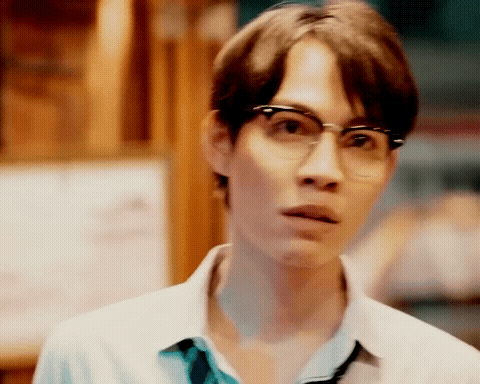
I don't know what's happening to me, y'all because first I didn't want Yuan to be too petty in Unknown, and now . . .
I ain't that mad at To Be Continued
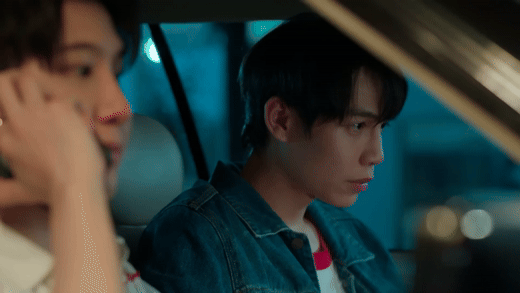
Therefore, it's not on the Alan scale (yet! We still have one more episode so shit could change) because the show is kinda basic, but not in a bad way. It's checking off the BL boxes, but, oddly enough, it called out itself in this past episode for doing that.
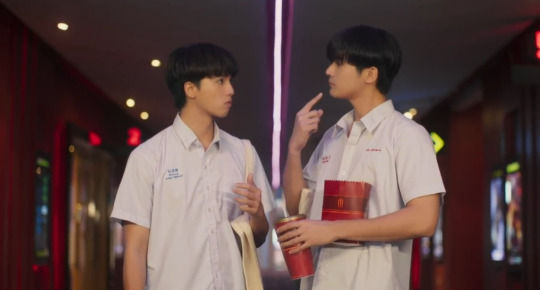
It's not City of Stars level of awareness, but both leads acknowledged the reason they separated for ten years was pointless. They both apologized for the hurt they caused, then they chilled on the couch and cracked jokes. It was rushed as many of us assumed it would be, but it happened.

In the beginning, I did not like Achi. I thought he was disrespectful to Ji and pushy. Then by episode three, I was completely on Achi's side while being livid at Ji for being distant.

But I've never been upset at Gumbie. He is perfect. He is everything. He is love personified. He resides in my heart. Forever.

Then, once both men stated that they should have actually talked to each other after they had sex as teenagers, I just wasn't as pissed at either of them as I had been for the six previous episodes.

I'm still upset. Let me not gloss over that because I had to deal with hating them for various reasons most of the series, but just like Sun for 7 Days Before Valentine, I see the growth. They aren't the same raggedy bitches that walked into the series.

Unlike this motherfucker.
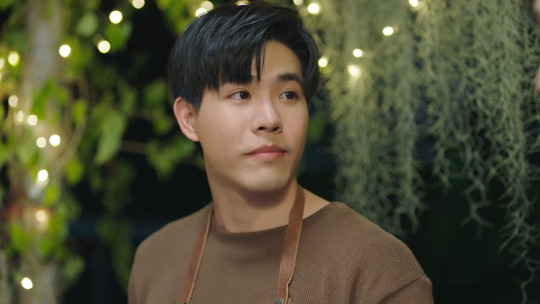
Phu was exactly who he was at the beginning of The Promise. Not one thing changed about him. He would still run away from the problems HE CAUSED instead of answering for any of the bullshit he pulled.

Nan had already forgiven Phu before Phu even came back into his life. Hell, Nan had forgiven Phu AS PHU WAS WALKING AWAY! Yet we still had to witness Phu be the victim.

There is only one show for me that has really gotten the "I left him because I love him" right and that's our Lord and Savior known as Our Dating Sim.

And it's because none of these other shows know how to balance the reason for leaving with the anger of being left. THAT'S IMPORTANT!
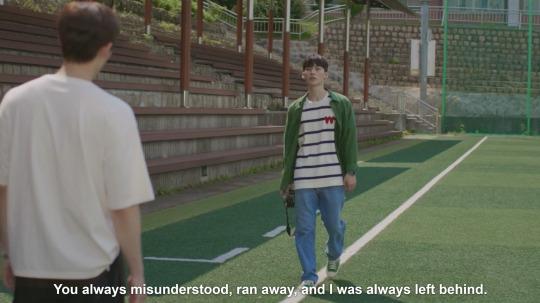
The Promise didn't allow Nan to be angry AND for Phu to acknowledge his part in that anger. Phu just kept crying. How can a relationship happen when Nan could never trust that Phu wouldn't run away again since Phu never saw what he did as wrong?

To Be Continued at least acknowledged that both the reason for Achi leaving and Ji being upset were insignificant. It's not great, but it's the basic amount needed to start fresh because it makes things equal. No one is left standing on high ground thinking his actions were right and the other guy's were wrong.

So, yeah, basic. Bare minimum. But it checked the boxes.
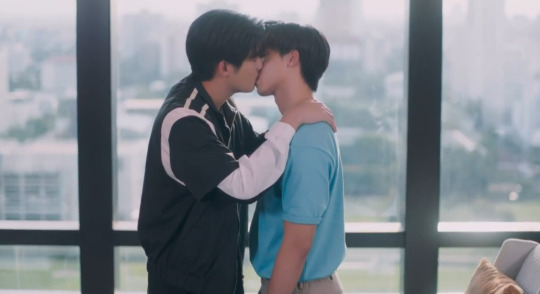
And it also had Poppy's fine ass, so . . .

I ain't that mad at it.
#meditation level breathing through episodes#but my blood pressure is solid#to be continued#to be continued the series#I ain't that mad at it#YET#But we still have one episode
23 notes
·
View notes
Text
Bryan Dyne: What would happen to a city in a nuclear exchange between the US and North Korea? [ This interview was conducted in mid-April 2017, when the Trump administration was ratcheting up tensions with North Korea ]
Michael Mills: Our work is based on the idea that if a nuclear bomb exploded over a large modern city, the explosion would cause fires that would ignite over the entire area, eventually becoming what is known as a firestorm. This means that the fires have become so hot that the city itself becomes fuel for the fire, which releases much more energy than the nuclear weapon itself. This is what happened during the incendiary bombings of Hamburg, Dresden and Tokyo and the atomic bombing of Hiroshima during World War II.
Essentially, if a city is ignited on this scale, the fires produce millions of tons of black smoke, also called soot, from the burning buildings and other materials. Heat from the fires causes the soot-filled air to rise, and the soot absorbs sunlight, further heating the air so that it rises into the stratosphere, 10 to 30 miles above Earth’s surface. These particles are so high that they don’t get rained out, since there is no weather in the stratosphere. So it can take decades for the soot to settle back down to the surface.
The main effect from all this soot being trapped in the stratosphere is that it continuously absorbs sunlight. In our models, which are based off of the detonation of 100 small nuclear weapons by India and Pakistan, global temperatures become the coldest they’ve been in the past 1,000 years. In a big exchange between major powers, you basically get ice age temperatures.
The second problem is that heating up the stratosphere destroys up to 50 percent the ozone layer by producing changes in the chemical reaction rates that produce ozone. While this happens today in Antarctica, that is a seasonal effect that occurs in the Antarctic spring and early summer. The loss of ozone from stratospheric heating is constant and worldwide. As a result, crops and ecosystems face not only freezing temperatures, but also intense ultraviolet light from the Sun as a result of a diminished ozone layer.
This research is not something that I’ve ever been funded to study. I’ve been able to pursue this in my spare time because I work on models of atmospheric chemistry and climate and it seemed like a very important issue to me.
I usually work on the climatic effects of particles from volcanoes, which are liquid droplets that tend to scatter light rather than absorbing it. They have a similar cooling effect in that after a volcanic eruption, these droplets are ejected into the stratosphere and reflect sunlight away from Earth. But the black absorbing smoke particles are much more effective at the same thing. They have a bigger effect on the Sun’s radiation than the volcanic particles.
BD: What’s the significance of using a model of a nuclear war between India and Pakistan?
MM: The initial motivation for our recent studies is that we wanted to revisit the nuclear war studies that were done in the 1980s, using the vastly more sophisticated climate models that had been developed since. So Alan Robock looked at impacts of a war between the US and Russia using a NASA climate model.
But we also wanted to look at the increasing number of new nuclear powers and their expanding arsenals. The India-Pakistan scenario served to show that even relatively small nuclear weapons can have a global effect. In 2007, when I was working on this with Brian Toon, each country had only about 50 Hiroshima-sized weapons each, the smallest nuclear weapons in existence. Even an exchange with these weapons, which are much smaller than those used by the US, Russia, Britain or France, can still cause global planetary environmental damage from the smoke that’s released.
Brian Toon was trying to get the people in the military interested in paying attention to this issue. The United States has a current arsenal of about 1,700 nuclear weapons. It’s difficult to justify having so many because even if you used them and no enemy retaliated, you would suffer from the global effects.
BD: In that vein, is there such a thing as a ‘limited nuclear war’?
MM: We obviously had a ‘limited nuclear war’ in World War II when the US used its entire stockpile of nuclear weapons, which was two. Given the number of weapons that now exist, however, once you start using them you quickly reach a point where you are producing so much damage to millions of people. And then there are the smoke effects, which damage the whole planet. I think people in charge of making military decisions need to be well aware that the idea of a ‘limited nuclear war’ is a very dangerous concept.
BD: Could you go a bit more into the science of how the cities are turned into smoke?
MM: The firestorm was something that the Allies intentionally devised in World War II in raids against Hamburg, Dresden and Tokyo, with many, many incendiary bombs designed to ignite fires close to one another. When you have fires all over a city, they tend to join together and intensify, creating temperatures so hot that even asphalt and concrete become fuel. That’s where the black smoke comes from.
As we saw with Hiroshima, when you detonate a nuclear weapon in the air above a city, it has the same effect of igniting fires all over the city.
The heat from the fires then acts like a thunderstorm, lifting air up very quickly. This means that air has to come in from below to replace it. So from all directions, air gets sucked in, adding more oxygen to the fire. Moreover, the air is so fast that it carries with it debris, animals and even people.
To quote from the book Fire and Ice by David Fisher:
“On July 27, 1943 nearly a thousand British bombers dropped over two thousand tons of bombs on Hamburg, most of them incendiaries, turning that city into a burning, melting quagmire of horror. The temperature reached one thousand degrees in the center of town, igniting the world's first firestorm. The superheated air rose so fast it sucked in outside air in the form of hurricane-strength winds, which force-fed the fire still further and blew helpless people like leaves into the burning center of destruction where they actually melted into pools of burning fat. On the outskirts of the storm other people were stuck in molten asphalt, suffocating and igniting. More than 40,000 people died that night. In the early spring of 1945 the American Twentieth Air Force topped the RAF's record by burning Tokyo, starting a conflagration that totaled sixteen square miles of intensely populated city, killing more than 80,000 people.”
BD: Are the fires something that can be started by radioactive fallout or is it just the initial explosion of the bomb?
MM: There are two kinds of ways of dropping a nuclear bomb over a city: there is an airburst, where it explodes high, and there is a ground burst, when it explodes when it hits the ground. Airbursts are most effective at creating firestorms, igniting cities. And it’s much more widespread damage than a ground burst. Ground bursts are what create fallout, which is when it sends up material from the ground that is radioactive, which can spread in the wind. There would be more fallout from a ground burst, and more fire from an airburst.
BD: What would the world look like after a nuclear exchange between the US and China?
MM: In that case, you're talking about two powers with very large stockpiles of nuclear weapons. You could get a tremendous amount of smoke if you started dropping bombs in cities across the US and China. That’s the sort of thing that Alan Robock modeled in a US/Russia war.
It’s what we call a true nuclear winter, in the sense that in some places in the interior of continents, for example in Ukraine, the temperatures remain below freezing all year long, so you can't grow crops at all under those conditions. Similar things happen in the center of the US and China. On all continents, basically. You have global average temperatures that get basically as cold, for a year or so, as what we had in the last ice age.
BD: What would happen after the first year?
MM: When we modeled an India/Pakistan war in 2014, we found that when you include interactive components in your model, such as the effects of the full ocean, expanding sea ice, that the changes to climate are more prolonged. This is largely thanks to the ocean’s ability to store lots of heat. Although global temperatures cool more slowly when one considers the ocean, the lower temperatures are more prolonged.
After 24 years of our simulation, temperatures were still below normal, whereas in other studies that didn’t include the full impact of the oceans, they showed that the temperatures had recovered in ten years. And this is a small nuclear war.
It’s really hard to say how much destruction something like this would cause, how many species would be wiped out and if ours would be among them or not. What I’ve studied shows that even a small event could cascade. We’ve seen food shortages in the past few decades that have been intensified by societal reactions. There was a global rice crisis in 2008 after India and Vietnam stopped exporting rice, for example, leading to a severe shortage in the Philippines and food riots in Haiti. Certainly food shortages have been tied to uprisings in the Arab Spring. So all sorts of things could happen that are destabilizing.
But with a large war, it’s somewhat unknowable, but also so horrific it doesn’t matter exactly how damaging it is.
88 notes
·
View notes
Note
will you do ranking of rights for bakarina cast sil vous plait
This is the moment you've been waiting for, the official ranking of which love interests have rights from most to least:
Maria– the standard against which all others are judged. Loves you not just as an object to be attained, but as a person she can share her life with. Always gives, without ever expecting anything in return. Maria is the blueprint for having rights.
Alan- bird man. King of staying in his own lane. Just wants to play piano and dream. Has attained a level of peace that nobody else has. Genuinely enjoys the time he spends with you even if it leads nowhere romantically. Everyone else could stand to be a little more like Alan and take a fucking step back.
Sophia- Sophia has so many rights. All she wants to do is share her interests with you and I think that's beautiful. Will only communicate her honest feelings disguised in the form of imaginary stories and hypothetical situations. But who among us can’t relate to that?
Nicol- If this is a pH scale from acidic to basic, Nicol is distilled water. He's never had any rights taken away, but has he earned any either? His main thing seems to be silent pining. There's only so much sighing at windows you can do before you have to use your words. Points for being a tuxedo mask cosplayer.
Mary- I am a known Mary Liker and the fact that her rights are in question is one of her most endearing qualities. Here's the thing: Mary has gameified love. On some level it's stopped being about Catarina and started being about crushing the competition so she can be the big winner. Whenever she's on screen I'm constantly nervous that the murders are about to begin. And even when she's off screen, she's got Sora doing her dark bidding now. She hasn't crossed any moral boundaries... but she COULD.
Geordo- mirrorverse counterpart to Maria. If Maria gives without taking, Geordo takes without thinking that he'll have to give something too. When your main personality trait is "entitlement" that's not a great sign. Needs therapy to realize that his need to possess love is due to a fear of abandonment, and then needs to change his behavior accordingly. Until that happens he is going to remain low on the list.
Keith- Seriously, it costs zero dollars to leave it alone after she says she’s not into you. Was already low on the list for his identity being “sister complex,” somehow continued to dig himself even deeper into rights debt in season 2. Be like Alan, discover the bird zone.
#LET THE OPINIONS BEGIN#from the ask box#hamefura 24#sms watches hamefura#hamefura spoilers#hamefura s2
149 notes
·
View notes
Photo
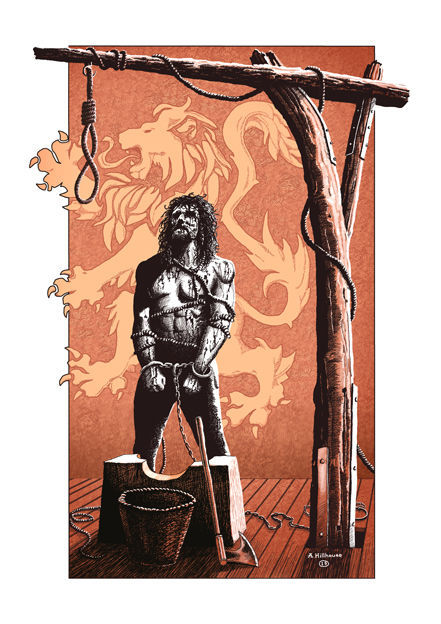

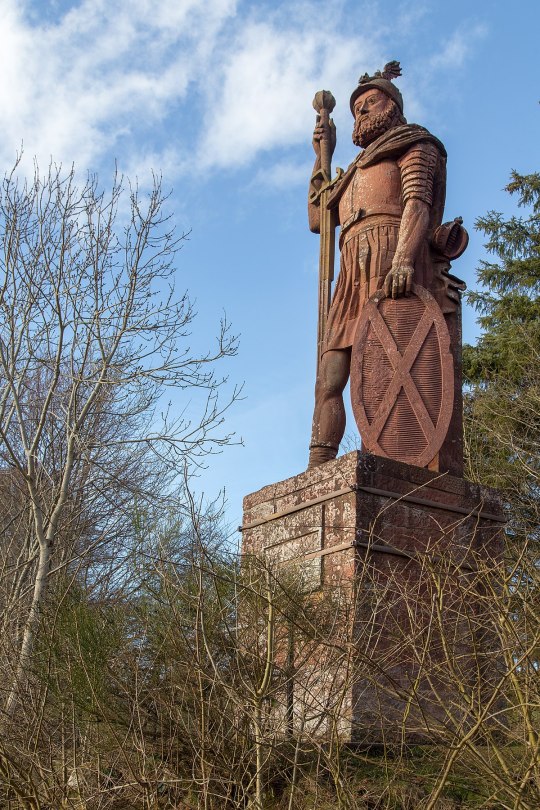

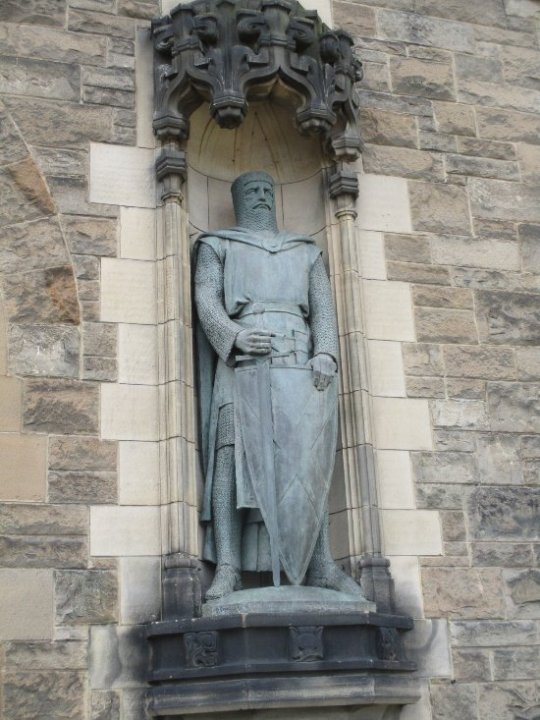
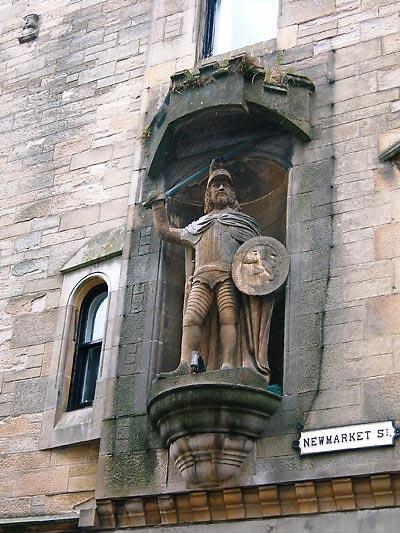



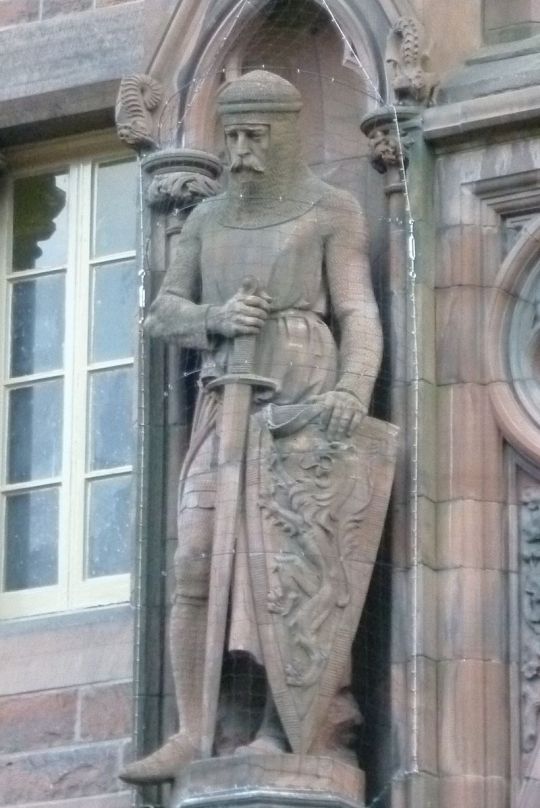

23rd August 1305 saw the trial and execution in London of Sir William Wallace, one time Guardian of Scotland.
I posted yesterday stating the trial happened then, it came u in a source I was reading about Wallace, sometimes the historians can get it wrong, but the post yesterday served as more of prelude and a taster of todays more detailed one.
Wallace is said to have accepted his execution without resistance and a brave heart. He even made a final confession to a priest and read from the book of Psalms before his punishment.
Types of execution at The Elms ranged from burning at the stake (for heretics) to the tried and tested hanged-drawn-and-quartered method for those convicted of high treason. For those unfamiliar with this method, it involves being dragged by a horse to the place of execution, hanged until almost dead, then disembowelled whilst still conscious, beheaded, and finally being chopped into four pieces (i.e. ‘quartered) and subsequently having these pieces put on display across the city, or in Sir William Wallace’s case, the country.
I think it only right to give a background post about Sir William Wallace so hang on to your hats, there’ll be no mention of French Princess’s, Blue painted Australians or the like.
Much of what we know about Wallace comes from Blind Harry, also known as Harry, Hary or Henry the Minstrel, is renowned as the author of The Actes and Deidis of the Illustre and Vallyeant Campioun Schir William Wallace, more commonly known as The Wallace. The trouble is how reliable can Blind Harry’s account be, it was written over 150 years after Wallace's grisly demise, the stories about oor erstwhile hero would have been handed down through word of mouth, possibly even in song.
Harty claims that Wallace's father was named Malcolm, and on this basis Wallace has traditionally been identified as Sir Malcolm Wallace, a minor landowner from Renfrewshire. Sir Malcolm was a descendant of Richard Wallace, a native of the lordship of Oswestry on the Welsh border, (Wallace itself meaning Welshman), who first came to Scotland in the twelfth-century in the service of Walter Fitz Alan, first High Steward of Scotland. This Stewart connection has also been used by historians to explain Wallace's place in the 'patriotic' struggle of the 1290s.
But Harry’s story has some flaws, now I’m not decrying the story, just some details like his age.
No reliable evidence exists to gives us an estimate of his age. Harry claims that Wallace was 'forty and five [years] of age' when he was executed, but also states that he was 'bot eighteen yer auld' shortly before the Battle of Stirling Bridge, which would place the year of his birth around 1278/9.
It shows how difficult it is to build a picture of Sir William.
The contemporary English chronicler William Rishanger implies that Wallace was a young man when he emerged as the leader of armed resistance to the English in southern Scotland in 1297, but this does little to narrow things down. According to Hary, Wallace was raised by his two uncles - both clerics - who saw to his education after his father was killed by an English knight named Fenwick
One of his uncles was from Dunipace, a wee town not far from my home in Falkirk, it is through this uncle we get an oft quoted phrase “This is the truth I tell you: of all things freedom’s most fine. Never submit to live, my son, in the bonds of slavery entwined.” The second pic shows part of the quote, it is on a paving stone on Falkirk High Street that I often walk past.
He does seem to have had two brothers, Malcolm - who would provide Wallace with much-needed support in the later part of his career - and John - who would later be executed for supporting Robert Bruce after 1306. His activities before 1297 are also uncertain, but they may have been less than wholesome. Contemporary English accounts describe him as a 'brigand' and a 'thief', suggesting he may have lived outside the law even before the English invaded. Of course, these may simply be attempts by hostile writers to blacken his reputation. However, a legal document of August 1296 mentions 'a thief, one William le Waleys' as an accomplice of a cleric named Matthew of York who had in June of that year been convicted of robbery at Perth. This could well be our William.
Again I am not trying to blacken his character, I am merely pointing out the difficult job that historians have when piecing together his life.
Whatever the details of his early life, following the English invasion of 1296 that Wallace first emerged into the mainstream of Scottish affairs in a big way. The death of King Alexander III in 1286, followed by the death of his granddaughter Margaret of Norway in 1290, had provoked a major succession crisis in Scotland. Efforts to settle the ongoing dispute between the competing Balliol and Bruce factions had led to increasing English interference in the governance of Scotland, culminating in a full-scale invasion of the kingdom in 1296. I’ve covered all this in posts regarding King John Balliol, the sacking of Berwick and the first Battle of Dunbar all in 1296.
One of Wallace’s first encounters with the English is told in typically dramatic form by Blind Harry, the story goes that William was fishing when he is accosted by five soldiers in the service of 'lorde Persye' Henry Percy, 1st Baron Percy who was the warden of Galloway and Ayrshire . The honest, unsuspecting Wallace offers them some of his fish so long as they leave the rest for his uncle - 'ane agyt knycht' - Wallace hopes to feed, but the soldiers demand all of his fish and attack him when he refuses them. Remarkably, Wallace disarms the first attacker using only a 'poutstaff' ('fishing pole'), seizes the discarded sword, kills two of the soldiers, severs the hand of another, and chases the survivors off!
The earliest confirmed encounter between Wallace and the English administration occurred in May 1297, when Wallace and a small band of supporters killed William Heselrig, the English sheriff of Lanark, shortly before an assize was due to be held in the town. According to the indictment against him in 1305, Wallace and his men also dismembered Helelrig's corpse. Famously, Hary claims that Wallace's attack on Heselrig was in retribution for the killing of Wallace's wife - Marion Braidfute, as Harry identifies her.
It is apparent from contemporary English accounts of the incident at Lanark that it proved to be a powerful recruiting tool for Wallace's rebellion. As Walter Guisborough put it, 'the common folk of the land followed him as their leader and ruler; the retainers of the great lords adhered to him; and even though the lords themselves were present with the English king in body, at heart they were on the opposite side'.
What I find remarkable is that the killing of the soldiers and then Heselrig kickstarted, the uprising against Edwards army and around 4 months Wallace and Andrew de Moray had assembled a combined army of over 6 thousand troops that ambushed the English as they crossed the Forth at Stirling.
Before Stirling we also had the capitulation of the Nobility at Irvine, I have also covered this in a previous post.
In the wake of the Scottish victory at Stirling Bridge, the English administration in Scotland all but collapsed. The Scots were once again able to form a government of their own, and at its head - now as Guardians of Scotland - were Wallace and Murray, although Murray's tenure was cut short when he died - probably of wounds sustained at Stirling Bridge - in November.
This was the zenith of Wallace's career. He had emerged from obscurity to the very summit of Scottish society, all in the space of a year. It also meant he had a price on his head and was the most wanted man in Scotland.
Edward I returned from the Continent in March 1298 and set his sights on Scotland, he marched with an army North in late June and quickly discovered that Wallace's response to the threat had been to devastate southern Scotland and withdraw with his army out of reach of the English. A bitter and frustrating campaign followed, with Edward almost abandoning the chase altogether. However, in late July Edward got wind that the Scots had been sighted near Falkirk, and hurriedly moved his army to meet them.
Precisely why the confrontation at Falkirk happened is, as with so much of Wallace's career, uncertain. Until this point in the campaign Wallace had carefully avoided the English army, a prudent strategy that would later pay off for the Scots under Bruce. Guisborough claims that Wallace had learned that Edward planned to withdraw and hoped to attack the English in the rear. This would at least explain why Wallace so suddenly abandoned his previously cautious strategy. However, given the potential challenges he was facing from the nobility of Scotland it may equally have been the case that Wallace felt compelled to face the English in open battle sooner or later and prove that his success at Stirling Bridge - which was after all arguably at least as much Murray's as it was Wallace's - was not just a lucky accident.
Whatever the case, the battle that followed was an utter catastrophe for the guardian. Abandoned by the cavalry, who may have lost their nerve as they had at Irvine or - as claimed by subsequent Scottish chroniclers - betrayed Wallace, Wallace's schiltrons - tightly-packed bodies of infantry armed with long spearmen - repelled the English cavalry but fell prey to English archery, which broke up their formations and left them vulnerable to a renewed assault by the cavalry. Wallace escaped the battle with his life, but his position as guardian had been irrevocably damaged. It is not entirely clear precisely when or where he resigned the guardianship, but by the end of 1298 Robert Bruce, earl of Carrick (the future king), and John Comyn, lord of Badenoch, were jointly exercising the office of guardian.
Wallace's time as guardian may have been decisively ended, but he remained an active opponent of the English in Scotland. The resistance he offered to the English in this period was not always in keeping with the wishes of the guardians. For instance, in August 1299 an altercation took place at a council at Peebles at which Wallace's plan to travel to France was condemned by Sir David Graham as being 'without the leave or approval of the Guardians'. Wallace's plans were defended by his brother Malcolm, who argued that they were at least 'for the good of the kingdom'
Wallace did indeed leave for France in 1299, apparently on a diplomatic mission to seek the support of King Philip IV against Edward I. Wallace's reception in France was initially hostile, since at the time Philip was himself seeking peaceful relations with Edward I, and Wallace was briefly incarcerated by the French king. However, in November 1300 Philip was writing to his envoys to the pope asking them to promote Wallace's case at the papal court. It is possible that Wallace himself visited to Rome assist in making the Scottish case to the pope in person, and the fact that when he was eventually he reportedly had on his person a safe-conduct from King Hakon V of Norway may suggest he also travelled to Norway on diplomatic business (although he may simply have planned to do so at some point). By 1303 - possibly earlier - he was back in Scotland and again involved in armed resistance to the English
By this point the tide in the war was slowly turning against the Scots. The French were once again pursuing a peaceful policy towards the English following their own military reversal at Courtrai in 1302. Scottish nobles were gradually making their peace with the English, and the surrender of Stirling Castle marked the effective end to organised Scottish resistance on a large scale. In light of his increasing success, Edward I was generally willing to be fairly accommodating towards those Scots who were willing to submit to him, but this was not so with Wallace. Indeed, in the general amnesty offered to the Scots by the English, Wallace might at best 'render himself up to the will and mercy of our sovereign lord the king, if it shall seem good to him' - hardly an encouraging prospect. When Wallace's long-standing cohort Simon Fraser submitted to Edward in July 1304, he was welcomed into the king's peace only on the understanding that he would assist in the ever-intensifying hunt for the fugitive Wallace. Nevertheless, Wallace remained at large until 3rd August 1305, when he was seized near Glasgow by men in the service of Sir John Menteith, keeper of Dumbarton Castle on behalf of King Edward. Menteith - identified as Wallace's 'gossop' ('godfather') by Harry.
Having finally captured Wallace, Edward I refused even to see him. Instead, Wallace was taken to London for what for want of a better word might be called a trial.
Sir Peter Malory, one of the king's justices, presided over the proceedings, which were little more than a formality. The charges were considerable. Wallace had, according his accusers, been a traitor to King Edward, perpetrated armed resistance against him and slain the king's officers (William Heselrig was mentioned by name), assumed the authority of 'a superior' of Scotland, submitted 'to the fealty and lordship of the lord king of France and [gave] him help to the destruction of the kingdom of England', made war on the northern counties of England, 'feloniously and seditiously assaulted, burned and devastated religious men and nuns...[and] inflicted [upon] all, old and young, wives and widows, children and babes the worst death which he could devise', and 'harmoniously and eagerly...refused to submit himself to the lord king's peace' even after being defeated at Falkirk. According to the Annals of London, he 'answered that he had never been a traitor to the king of England, but granted the other crimes charged against him'.
In the eyes of the English as an outlaw, Wallace had no recourse to a defence. Instead, he was summarily sentenced to be executed in the manner reserved for traitors. Wallace was thus 'dispolyeid of his weid' as Hary puts it and dragged naked on a hurdle through the streets of London. At Smithfield he was hanged by the neck 'for the robberies, homicides and felonies which he carried out in the kingdom of England and the land of Scotland'
Before he could suffocate he was taken down and emasculated and disembowelled 'for the dreadful wickedness which he did to the church'. His 'heart, liver and lungs and all the bowels...from which such perverse thoughts proceeded' were then burned. Presumably now dead, Wallace was beheaded - the punishment for outlawry - and his body was divided into four parts. His head was to be displayed on London Bridge (where it remained until at least September the following year, when it was joined by that of his former comrade Simon Fraser). The remaining quarters were to be displayed on gibbets at Newcastle-upon-Tyne, Berwick-upon-Tweed, Stirling and Perth, 'to put dread in and to warn all by-passers and observers'.
The savagery with which Wallace was dispatched contrasts sharply with Edward I's attitude toward the Scots in general, but let’s not forget it was the usual punishment for any person deemed to be a traitor.
However it appeared that Longshanks earlier experiences with the Scots had convinced the ageing English king that a more conciliatory approach to establishing a lasting English administration in the kingdom. Edward's new plan for the settlement of Scotland envisaged a ruling council composed primarily of Scots - including the likes of Bruce and Comyn - which would advise an English lieutenant who would retain overall authority. Scots law and custom was to be respected, at least in the short term, and it may have seemed to many at the time that the objections that had fuelled Wallace's original rebellion in 1297 had been addressed.
As we know, the matter would be rendered moot less than six months after Wallace's death when Robert Bruce killed Comyn, forcing him to make public his ambition to become King of Scots. In many senses Bruce's struggle was quite unlike Wallace's, being primarily motivated by his own ambitions and perception of his rights. That being said, if Wallace had not maintained the momentum behind Scottish resistance to the English, particularly in the crucial year of 1297, then Bruce may never have had his opportunity to make his successful bid for power.
Pics are statues of Sir William Wallace around Scotland in order, Bemersyde near Dryburgh, Aberdeen, opposite His Majesty's Theatre, Edinburgh Castle, Newmarket Street Ayr, St Nicholas Church, Lanark, Stirling Town Centre, The National Wallace Monument Abbey Craig, Stirling, showing it before and after it’s recent restoration, Scottish National Portrait Gallery, Edinburgh and his memorial at Smithfield, London. There are others around the world that remember the Scots Patriot who so bravely stood up to fight for his country.
83 notes
·
View notes
Text
RWBY/DC
I’ll admit I really like the RWBY/DC crossover, but I had an idea to make them more, “canon” so to say...and adding them to Collective Remnants. So in the end, they’re half DC and half their own characters.
So I present to you, the Justice League of Remnant (Lore Pending): Few are actually official huntsman, I’m thinking of making them settlers or tied to the Equinox organization.
Superman-Cohen Himawari-Human
Name Meaning: Cohen-Derived from kohen, or priest in Hebrew. Himawari-Sunflower in Japanese.
Weapon: Unnamed, unadorned gauntlets
Semblance: Under a Yellow Sun: Aura is constantly charged by sunlight, including moonlight, enhancing his strength, durability, and releasing it all in one massive explosion. Very reactive with Dust.
A ‘Forgotten’ found by two Valean farmers.
Wonder Woman-Janna Barros-Kangaroo Faunus(Hands)
Name Meaning: Janna-Derived from Jannat, a Bengali/Urdu name meaning paradise or garden. Barros-A Portuguese name meaning clay, and often referring to those who work with clay.
Weapon: The Gifts: Three weapons given to her by her family
The Persuaders-Jian capable of shifting into a whip, belt & lasso.
The Defenders-Twin gauntlets infused with Gravity Dust and capable of shifting into shields.
The Crown-A bladed discus with Gravity Dust
Semblance: Peace-Creates a shockwave that disarms/stuns/knocks down anyone with hostile intent
Magic: Truth-Can force anyone subdued by her to tell the truth, but as a drawback becomes weaker when subdued herself
Born to the leader of a commune of warrior mystic women based upon the island of Starfall, she desires to see the world.
Batman-Renard Cartwright-Flying Fox(Bat) Faunus(Bat Ears)
Name Meaning: Renard-Derived from the french word for fox. Cartwright-Someone who works with carts.
Weapon: Batwing-Double sided battle axe whose head is capable of detaching and expanding to gliding wings. Bombs-Dust infused explosives capable of acting as tasers, smokebombs, freezing tablets etc.
Semblance: Echovision: Can gain an internal view of any object he makes contact with hard enough (Ex: he can gain an internal view of someone’s body by punching them). Very small scale
Magic: Rhythm of the City: Instinctual knowledge to any city he spends enough time and familiarizes himself with.
Son of a new money Valean Faunus family, who were murdered in his childhood. After being ejected from a preparatory Huntsman Academy, he know operates within the city as a private eye.
Flash-Jasper Sciell-Box Turtle Faunus(Shell on his back)
Name Meaning: Jasper-Several meanings, but I’m referring to a shade of red. Sciell-An old english word meaning shell
Weapon: Shellraiser-A shell patterned but otherwise simple shield.
Semblance: Speedforce-Field capable of altering a subjects relationship to time, inertia & velocity. Most notably used to give himself super speed or throw his shield with tremendous force.
Born to Faunus refugees of Mantle following the Fall of Atlas, Jasper grew up in Vacuo, developing a desire to help people, but not necessarily become a huntsman. Instead became a hooded vigilante known only as ‘the Flash’, protecting Vacuo’s central quarter.
Jesse Quick-Alanna Varpu-Squirrel Faunus(Tail)
Name Meaning: Alanna-Derived from Alan, possibly meaning little rock in Breton. Varpu-Finnish for a type of berry bush.
Weapon: Storm Knuckles: Two lightning dust infused gauntlets.
Semblance: Lightning Step: Can absorb electricity to increase her speed to superhuman levels.
Daughter of two huntsman who were killed in her childhood, Alanna was taken in by the Sciells, and viewed Jasper as an older brother. Unwilling to pursue the career that killed her parents, but still wanting to help, she joined Jasper as the ‘Kid Flash’.
Aquaman-Anaru Korallion-Shark Faunus(Gills)
Name Meaning: Anaru-As far as I can tell, a Maori derivative of Andrew, meaning “masculine”. Korallion-Greek word for Coral.
Weapon: Earthshaker: Dust infusible Quindent. Inherited from his mom.
Semblance: Ocean’s Call: The ability to command sea life and look through their eyes.
Son of a mixed human faunus couple in southern Mistral, Anaru was unfortunate enough to grow up in a conservative area, thus grew up relatively isolated save his parents, with only grew worse after his mother death on a mission. Now he wanders the world, seeking to find a place to belong.
Jessica Cruz-Esmerelda Cesare-Human
Name Meaning: Esmerelda-Spanish for emerald. Cesare-Derived from Ceasar, referring to a shade of green in this case.
Weapon: Lantern-Highly advanced experimental mobile hologram generator gauntlets, with the ability to shoot high intensity Light Dust beams as defense. (Doesn’t create solid constructs)
Semblance: N/A
Magic: Emerald Sight-The ability to glimpse snippets of the possible future.
A young, brilliant, but agoraphobic and anxiety ridden researcher at the Argus Technological Consortium, who’s only goals in life are to finish refining this portable hologram project...and ignoring the freaky magical visions, thank you very much. But both her scientific mind and magical attributes have unknowingly aimed a target at her back...
Cyborg-Dunstan Fitzroy-Human
Name Meaning: Dunstan-Meaning dark stone. Fitzroy-“son of the king” in Anglo-Norman English
Weapon: Sound system integrated into his cybernetic frame.
Semblance: Shout: Enhancement of any sound he emits, including his cybernetics. (unlocked in the same incident responsible for his injury)
Son of two of Argus’ (formerly Atlas) foremost cybernetics researchers, Dunstan would live a charmed until a simple day traveling with his mom to a relatively remote village. Upon the return to Argus however, they would be ambushed by Grimm, his mother and the Hunter accompanying them would die, and Dunstan would be mauled severely. Fortunately, his father was able to essentially rebuild his mangled body with cybernetics. Now he works with his father in the robotics field.
Green Arrow-Cypress Hill-Human (credit to @thepariahcontinuum for the name idea)
Name Meaning: Cypress-A coniferous tree. Hill-An elevated terrain.
Weapon: Hawkeye-Bow that fold into a knuckle duster, alongside several varieties of trick arrows.
Semblance: Straightshooter: Can make any object aerodynamic, allowing him to expand his arsenal to...bizarre extents.
Robyn Hill’s adopted son, hoping to live up to his mother and the rest of the Happy Huntresses. Outspoken and bullheaded, he is the only member of this motley crew that’s actually a formally trained Huntsman.
#DC#RWBY#DC AU#RWBY AU#Justice League#RWBYOC#i mean...technically#Superman#Batman#Wonder Woman#Flash#Jesse Quick#Aquaman#Jessica Cruz#Green Lantern#Green Arrow#Cyborg
18 notes
·
View notes
Text
Real Dinosaurs Versus Reel Dinosaurs: Film’s Fictionalization of the Prehistoric World
by Shelby Wyzykowski
What better way can you spend a quiet evening at home than by having a good old-fashioned movie night? You dim the lights, cozily snuggle up on your sofa with a bowl of hot, buttery popcorn, and pick out a movie that you’ve always wanted to see: the 1948 classic Unknown Island. Mindlessly munching away on your snacks, your eyes are glued to the screen as the story unfolds. You reach a key scene in the movie: a towering, T. rex-sized Ceratosaurus and an equally enormous Megatherium ground sloth are locked in mortal combat. And you think to yourself, “I’m pretty sure something like this never actually happened.” And you know what? Your prehistorically inclined instincts are correct.
From the time that the first dinosaur fossils were identified in the early 1800s, society has been fascinated by these “terrible lizards.” When, where, and how did they live? And why did they (except for their modern descendants, birds) die out so suddenly? We’ve always been hungry to find out more about the mysteries behind the dinosaurs’ existence. The public’s hunger for answers was first satisfied by newspapers, books, and scientific journals. But then a whole new, sensational medium was invented: motion pictures. And with its creation came a new, exciting way to explore the primeval world of these ancient creatures. But cinema is art, not science. And from the very beginning, scientific inaccuracies abounded. You might be surprised to learn that these filmic faux pas not only exist in movies from the early days of cinema. They pervade essentially every dinosaur movie that has ever been made.
One Million Years B.C.
Another film that can easily be identified as more fiction than fact is 1966’s One Million Years B.C. It tells the story of conflicts between members of two tribes of cave people as well as their dangerous dealings with a host of hostile dinosaurs (such as Allosaurus, Triceratops, and Ceratosaurus). However, neither modern-looking humans nor dinosaurs (again, except birds) existed one million years ago. In the case of dinosaurs, the movie was about 65 million years too late. Non-avian dinosaurs disappeared 66 million years ago during a mass extinction known as the K/Pg (which stands for “Cretaceous/Paleogene”) event. An asteroid measuring around six miles in diameter and traveling at an estimated speed of ten miles per second slammed into the Earth at what is now the Yucatán Peninsula in Mexico. The effects of this giant impact were so devastating that over 75% of the world’s species became extinct. But the dinosaurs’ misfortunes were a lucky break for Cretaceous Period mammals. They were able to gain a stronger foothold and flourish in the challenging and inhospitable post-impact environment.
Cut to approximately 65 million, 700 thousand years later, when modern-looking humans finally arrived on the chronological scene. Until recently, the oldest known fossils of our species, Homo sapiens, dated back to just 195,000 years ago (which is, in geological terms, akin to the blink of an eye). And for many years, these fossils have been widely accepted to be the oldest members of our species. But this theory was challenged in June of 2017 when paleoanthropologists from the Max Planck Institute for Evolutionary Anthropology reported that they had discovered what they thought may be the oldest known remains of Homo sapiens on a desert hillside at Jebel Irhoud in Morocco. The 315,000-year-old fossils included skull bones that, when pieced together, indicated that these humans had faces that looked very much like ours, but their brains did differ. Being long and low, their brains did not have the distinctively round shape of those of present-day humans. This noticeable difference in brain shape has led some scientists to wonder: perhaps these people were just close relatives of Homo sapiens. On the other hand, maybe they could be near the root of the Homo sapien lineage, a sort of protomodern Homo sapien as opposed to the modern Homo sapien. One thing is for certain, the discovery at Jebel Irhoud reminds us that the story of human evolution is long and complex with many questions that are yet to be answered.
The Land Before Time
Another movie that misplaces its characters in the prehistoric timeline is 1988’s The Land Before Time. The stars of this animated motion picture are Littlefoot the Apatosaurus, Cera the Triceratops, Ducky the Saurolophus, Petrie the Pteranodon, and Spike the Stegosaurus. As their world is ravaged by constant earthquakes and volcanic eruptions, the hungry and scared young dinosaurs make a perilous journey to the lush and green Great Valley where they’ll reunite with their families and never want for food again. In their on-screen imagined story, these five make a great team. But, assuming that the movie is set at the very end of the Cretaceous (intense volcanic activity was a characteristic of this time), the quintet’s trip would have actually been just a solo trek. Ducky and Petrie’s species had become extinct several million years earlier, and Littlefoot and Spike would have lived way back in the Jurassic Period (201– 145 million years ago). Cera alone would have had to experience several harrowing encounters with the movie’s other latest Cretaceous creature, the ferocious and relentless Sharptooth, a Tyrannosaurus rex.
Speaking of Sharptooth, The Land Before Time’s animators made a scientifically accurate choice when they decided to draw him with a two-fingered hand, as opposed to the three fingers traditionally embraced by other movie makers. For 1933’s King Kong, the creators mistakenly modeled their T. rex after a scientifically outdated 1906 museum painting. Many other directors knowingly dismissed the science-backed evidence and used three digits because they thought this type of hand was more aesthetically pleasing. By the 1920s, paleontologists had already hypothesized that these predators were two-fingered because an earlier relative of Tyrannosaurus, Gorgosaurus, was known to have had only two functional digits. Scientists had to make an educated guess because the first T. rex (and many subsequent specimens) to be found had no hands preserved. It wasn’t until 1988 that it was officially confirmed that T. rex was two-fingered when the first specimen with an intact hand was discovered. Then, in 1997, Peck’s Rex, the first T. rex specimen with hands preserving a third metacarpal (hand bone), was unearthed. Paleontologists agree that, in life, the third metacarpal of Peck’s Rex would not have been part of a distinct, externally visible third finger, but instead would have been embedded in the flesh of the rest of the hand. But still, was this third hand segment vestigial, no longer serving any apparent purpose? Or could it have possibly been used as a buttressing structure, helping the two fully formed fingers to withstand forces and stresses on the hand? Peck’s Rex’s bones do display evidence that strongly supports arm use. You can ponder this paleo-puzzle yourself when you visit Carnegie Museum of Natural History’s Dinosaurs in Their Time exhibition, where you can see a life-sized cast of Peck’s Rex facing off with the holotype (= name-bearing) T. rex, which was the first specimen of the species to be recognized (by definition, the world’s first fossil of the world’s most famous dinosaur!).
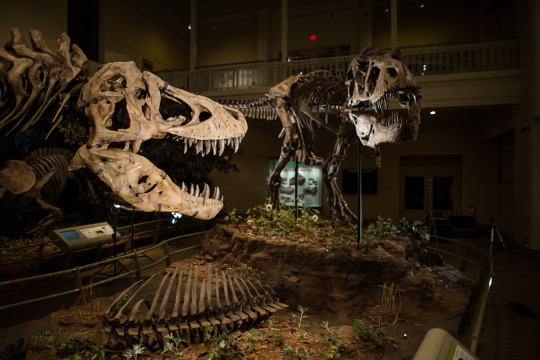
T. rex in Dinosaurs in Their Time. Image credit: Joshua Franzos, Treehouse Media
Jurassic Park
One motion picture that did take artistic liberties with T. rex for the sake of suspense was 1993’s Jurassic Park. In one memorable, hair-raising scene, several of the movie’s stars are saved from becoming this dinosaur’s savory snack by standing completely still. According to the film’s paleontological protagonist, Dr. Alan Grant, the theropod can’t see humans if they don’t move. Does this theory have any credence, or was it just a clever plot device that made for a great movie moment? In 2006, the results of ongoing research at the University of Oregon were published in the Journal of Vertebrate Paleontology, providing a surprising answer. The study involved using perimetry (an ophthalmic technique used for measuring and assessing visual fields) and a scale model T. rex head to determine the creature’s binocular range (the area that could be viewed at the same time by both eyes). Generally speaking, the wider an animal’s binocular range, the better its depth perception and overall vision. It was determined that the binocular range of T. rex was 55 degrees, which is greater than that of a modern-day hawk! This theropod may have even had visual clarity up to 13 times greater than a person. That’s extremely impressive, considering an eagle only has up to 3.6 times the clarity of a human! Another study that examined the senses of T. rex determined that the dinosaur had unusually large olfactory bulbs (the areas of the brain dedicated to scent) that would have given it the ability to smell as well as a present-day vulture! So, in Jurassic Park, even if the eyes of T. rex had been blurred by the raindrops in this dark and stormy scene, its nose would have still homed-in on Dr. Grant and the others, providing the predator with some tasty midnight treats.
Now, it may seem that this blog post might be a bit critical of dinosaur movies. But, truly, I appreciate them just as much as the next filmophile. They do a magnificent job of providing all of us with some pretty thrilling, edge-of-your-seat entertainment. But, somewhere along the way, their purpose has serendipitously become twofold. They have also inspired some of us to pursue paleontology as a lifelong career. So, in a way, dinosaur movies have been of immense benefit to both the cinematic and scientific worlds. And for that great service, they all deserve a huge round of applause.
Shelby Wyzykowski is a Gallery Experience Presenter in CMNH’s Life Long Learning Department. Museum staff, volunteers, and interns are encouraged to blog about their unique experiences and knowledge gained from working at the museum.
#Carnegie Museum of Natural History#Dinosaurs#Dinosaur Movies#Jurassic Park#Jurassic#Land Before Time#Paleontology
115 notes
·
View notes
Photo

Maggie Smith and Bob Hoskins in The Lonely Passion of Judith Hearne (Jack Conway, 1987)
Cast: Maggie Smith, Bob Hoskins, Wendy Hiller, Marie Kean, Ian McNeice, Alan Devlin, Rudi Davies, Prunella Scales, Áine Ní Mhuiri, Sheila Reid. Screenplay: Peter Nelson, based on a book by Brian Moore. Cinematography: Peter Hannan. Production design: Michael Pickwoad. Film editing: Terry Rawlings. Music: Georges Delerue.
The Dublin of The Lonely Passion of Judith Hearne is a nest of vipers, full of people with stunted lives, blinkered vision, and downright meanness. The effect of this is to make Judith Hearne (Maggie Smith) look good by comparison, even though her life has been stunted and her vision is none too wide either. Perhaps she has had enough of the meanness exhibited by her late Aunt D'Arcy (Wendy Hiller) and by her spiky landlady (Marie Kean) and the other denizens of the boarding house into which she has recently moved, that she seems almost sunny and pleasant as if to defy them. She carries with her two icons of her past: a dour portrait of her aunt and a picture of the Sacred Heart of Jesus. These images represent her efforts to control her alcoholism through self-discipline and religion, but the truth is that both only serve to make the problem worse, exacerbating her guilt when she fails at the task. In late middle age, with a small annuity and a clump of savings, she has little to look forward to, so she grasps at anything that represents hope -- or at least a surcease from loneliness -- which manifests itself as her landlady's brother, James Madden (Bob Hoskins), a stubby middle-aged man with a neatly trimmed mustache who has recently returned from the United States. He's a phony, of course, a man full of schemes that will never turn out, like opening a hamburger restaurant in Dublin, and whose American career in the New York hotel business amounted to being a doorman. He latches on to Judith because he thinks she has money stashed away. She gravitates to him because he represents a wider world than she has known in her years taking care of her aunt and earning a little money by giving piano lessons. It's a bleak and unforgiving tale, spiked with a little unsavory sex -- the rivalry between Madden and his nephew (Ian McNeice), a corpulent would-be poet who sponges off of his mother, for the attentions of the housemaid Mary (Rudi Davies), whom Madden rapes when she spurns him. No one comes off well in this movie, but I couldn't help being drawn in by the performances of Smith, Hoskins, Hiller, and the others, even when their characters were at their most unlikable.
3 notes
·
View notes
Text
Fabio Blue Nose
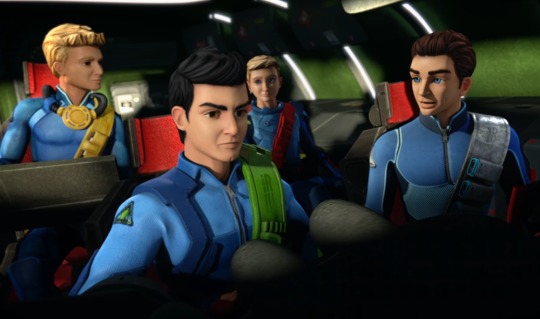
Aaaargh, this was supposed to be a short, but it has demanded to be longer and I’ve run out of time. I did not want another WIP!
But anyway, here be Fabio Blue Nose, or a start of some kind at least. I hope you enjoy this random fluff so far.
Many thanks to @tsarinatorment and @janetm74 for their support.
It should also be noted that no sea shanties were harmed in the creation of this fic. Nor are their any sea shanties in it, despite there being an urge to add one.
Aaaargh, it is 12.45am. I gotta go sleep, damnit.
-o-o-o-
The first time was an accident.
None of the brothers owned up to it but chances were it was Gordon, no matter how many times he swore complete innocence.
Though, come to think of it, Scott was rather more compliant than expected, so Virgil threw a little unspoken suspicion his way as well.
But anyway, it happened and it was a good thing.
There was always press at rescues that they could reach. Scott was fully aware of the importance of the media, particularly where communication and, to a certain extent, promotions were concerned. But when they got in the way of a rescue, the commander was well known to be intolerant.
This particular time, however, the press was managed by the GDF who were also onsite due to the scale of the disaster and possible sabotage, so International Rescue didn’t have to worry about them so much while they dug fifty miners out of a kilometre deep hole.
All but John were on the rescue. All but John were dirty, sweaty and ever so tired. There had been a chunk of rock that had needed demolition charges to get through, causing enough headache that even Virgil had been heard to spit profanity over comms when one of the charges misfired and nearly took his head off with shrapnel in the tunnel.
Eleven of the fifty men didn’t make it and there was some body recovery after the far too many trips it took to get them all back to the surface. In short, it had been an ugly, hard day. All the Tracys just wanted to go home and disappear into whatever distraction worked best for them.
Scott had to liaise with the GDF regarding red tape and reporting circumstances in the mine...that they should probably go down and see for themselves instead of relying on a civilian rescue organisation to do their dirty work for them. But whatever the reason, Virgil, Gordon and Alan were left to pack up and wait while all the dots and crosses were applied to appropriate Ts and Is.
It took longer than expected.
Virgil, sporting an aching shoulder, was reduced to pacing the length of Two’s open hatch. He should just take his brothers home and leave Scott to tackle the GDF.
But Scott was just as tired as they were and he had only just returned from another rescue when this callout came in. His big brother was exhausted and Virgil feared that if he left him behind they might end up a few GDF personnel short before the sun went down.
And the press were watching.
It was probably at this point the photo was taken.
It was iconic, even Virgil had to admit it. Emotive and made a statement about who they were and what they did.
The shot was from a forty-five degree angle, using a zoom lens that caught every detail of Two’s open module. Virgil stood in the middle of the ramp, paused mid-pace and staring off at something, probably Scott, in the distance. The shadow of Two in the evening light had his head in shadow, adding a heroic seriousness to his expression.
That alone was dramatic, but behind him from the camera angle, sitting on the top of the ramp to one side of the open hatch were Gordon and Alan.
Gordon had his arm around his little brother as they both stared in the same direction as Virgil. All three brothers were grimy and exhausted, Alan’s head was resting on Gordon’s shoulder.
It must have been an extraordinary lens to capture the detail because the media were fenced off a considerable distance away, but there was enough clarity to see one tear track in the dust on Alan’s face.
Their littlest brother claimed he had scratched his cheek, but they all knew better.
So, yes, this photo was taken and thrown across the planet as an illustration of three heroes of International Rescue.
There were rave reviews. Whole swaths of text praising everything their organisation did, what had been achieved that day and what had been achieved in the past. Inevitably, the history of International Rescue did the rounds again, their father’s legacy and all that. An unfortunate reminder of both the parents they had lost in the process. Being proud didn’t negate the pain that came along with it.
But due to the quirkiness of human attention, none of the above was the source of the impact the photo finally had.
It wasn’t Thunderbird Two or any of the three brothers photographed that captured most of the public’s attention.
It was a teddy bear.
Virgil kept a number of cuddly toys on Two. Some he had knitted himself, or purchased, a few were donated, but all were kept and given to children and occasionally adults, who were terrified during a rescue or evacuation and found themselves secured in Two’s module.
Perhaps the bear had fallen out of its storage, perhaps one of the brothers had shoved it aside. Whatever had happened, in the iconic photograph of three hardworking Tracy brothers, right at the back, inside the module sat a dark grey teddy bear with a blue nose and shiny eyes that caught the setting sun.
Staring right at the camera.
And the world went nuts for this bear.
It took less than a day for the fame of the teddy bear to become enough to alert Thunderbird Five and, in turn, roust Virgil out of bed - it’s lunchtime, Virgil, time enough to wake up.
Virgil’s answer to that was clear, precise and rated for adults only.
John triggered the coffee maker in the kitchen to start working its magic before his brother busted up something other than the English language.
Eventually, Virgil made it down to Two and dug out the bear responsible.
It was still sitting on top of the storage locker, which added kudos to Virgil’s flying skill.
He was going to shove it back into the locker when John asked him not to. Apparently, the bear had a following on social media.
So, Virgil picked it up and took it back up to the comms room. He placed it beside him at their father’s desk and pulled up a search screen and typed in ‘bear’ and ‘International Rescue’. He could, of course, ask John to forward him whatever his brother had obviously found, but he didn’t.
The search results that sprung up made it very clear that the world was most definitely obsessed with that bear.
There were zoomed in pictures of the inside of the module – a fact that had Virgil a little worried regarding security until he realised that anything that could possibly be compromised was just that little bit blurred. No doubt that was Eos at work. Probably snared the original photo before it could perpetuate.
But even then it was obvious that the posters had no interest in the technology. Several photos had the bear circled in red.
Various comments attempted to give reasons as to why the bear was there. The explanations were rather fantastical in the majority. A few were actually disturbing and linked Alan’s tear track to the bear – Virgil threw that bit of information at Thunderbird Five and that line of thought suddenly disappeared from the results. Some suggested the photograph was posed, a few mentioned that Thunderbird Two did carry such things and that was followed by a wave of genuine thanks and admiration for what they did…and then completely ignored when more fascinating ideas were presented.
Virgil was quite frankly amazed at what people could concoct from a photograph of a bear.
Said bear sat and stared at him the entire time. Its nose was very blue.
But ultimately the outcome that had occurred somewhere between all four brothers making it home last night and the time John dragged Virgil out of bed, Fabio Blue Nose had become a mascot for International Rescue.
Yes, ‘Fabio’.
Some inspired person had mentioned ‘F.A.B.’ as IR’s callsign and it went downhill from there.
Fabio stared at Virgil almost accusingly. His curly fur was a shade darker than Scott’s baldric and his eyes as golden as Gordon’s. His blue nose shone in the sunlight.
They had a teddy bear with a fan base, fan art and a dash of fan fiction.
Virgil caught his own name in one of them and shut it down so fast the browser crashed.
It didn’t help that an hour later Gordon found the same story and promptly paraded it around the villa for all to see and hear whether they wanted to or not. Apparently, because Virgil was the pilot of Thunderbird Two, Fabio was his crewmate.
A very heroic crewmate at that.
Could a teddy bear really rappel down a grapple like that?
He shook his head and threw a lounge cushion at his brother’s head. He really didn’t need to know.
But in any case, they now had a mascot that wasn’t Alan.
Gordon was hit in the head again for that assessment.
So, Fabio found his way to being sat on Two’s dash and accompanying them out on rescues.
The second photo was more than they had ever expected.
-o-o-o-
TBC?
#thunderbirds are go#thunderbirds fanfiction#thunderbirds#Virgil Tracy#fabio blue nose#Gordon Tracy#I don't know what the hell I was thinking
44 notes
·
View notes